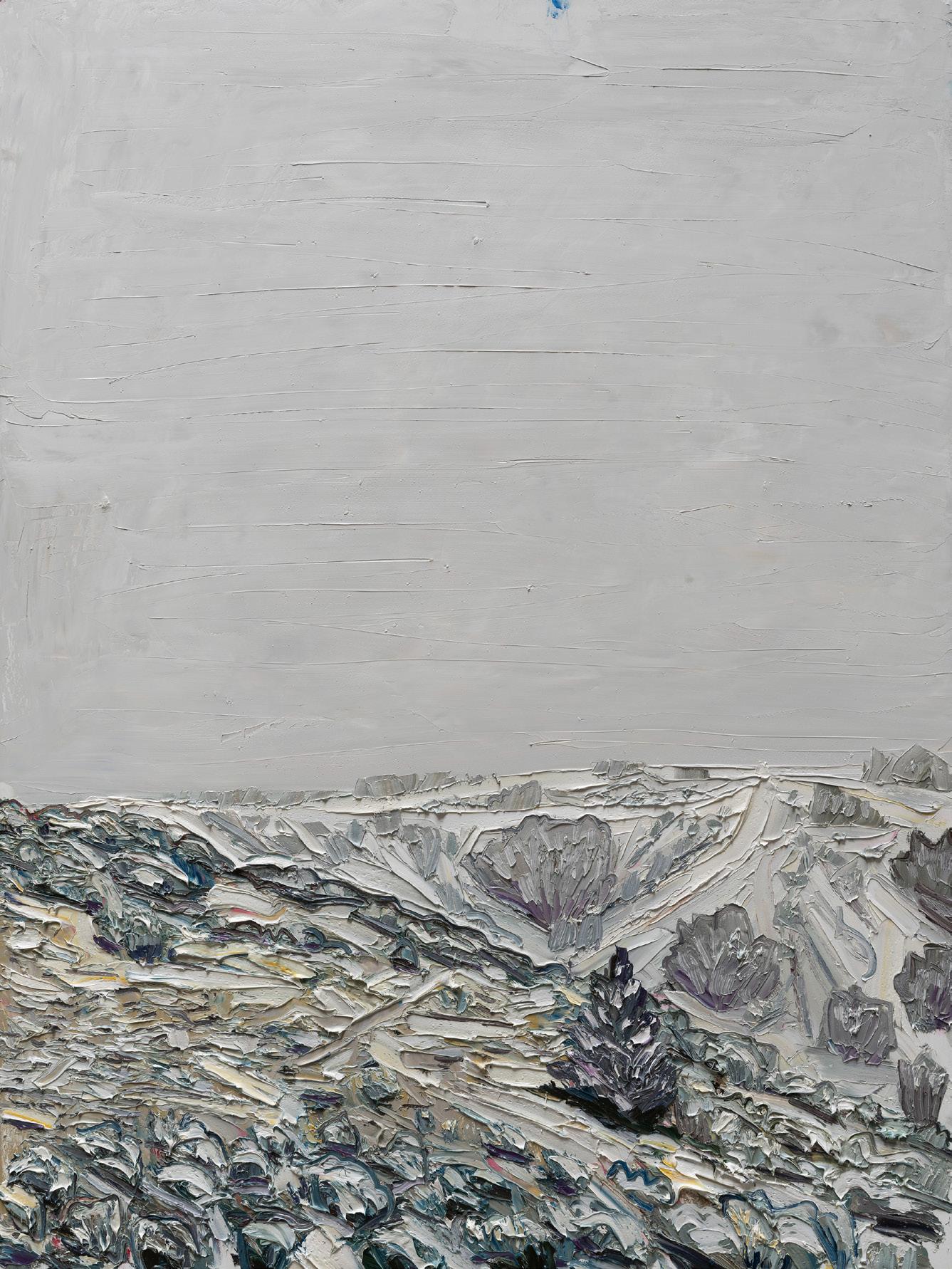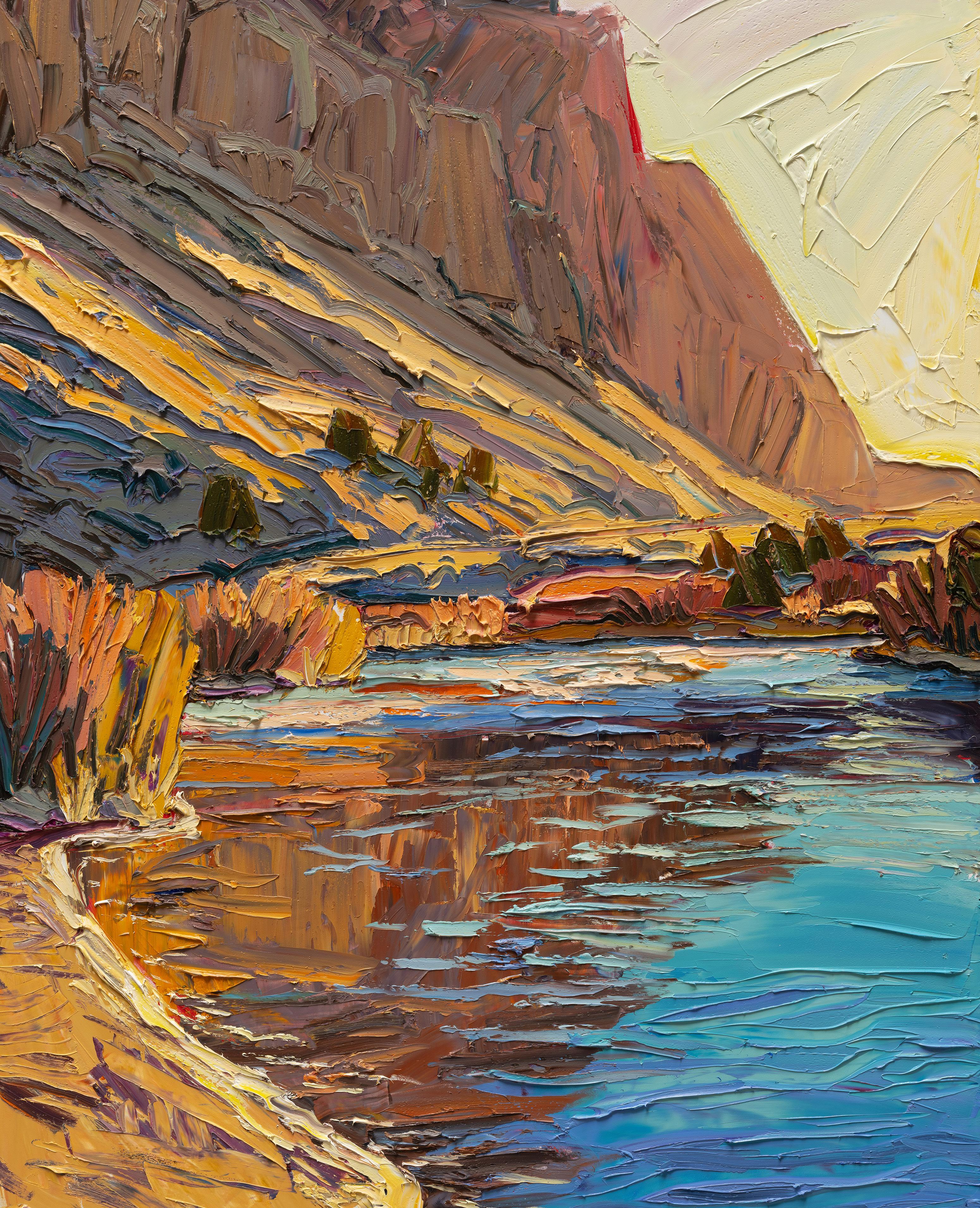

JIVAN LEE Dreamtime Emissaries
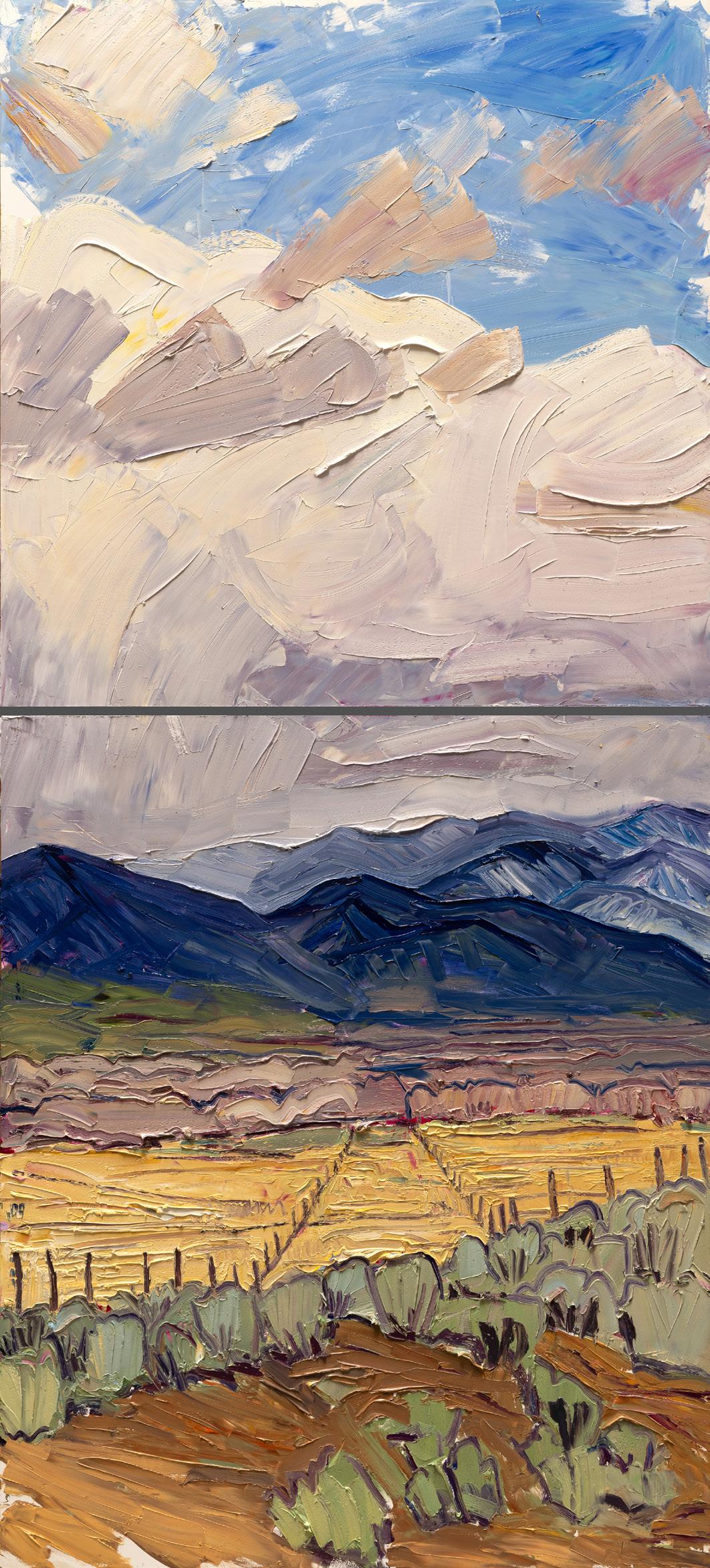
The Long Field (diptych) 2025, oil on panel, 66” x 30”
JIVAN LEE Dreamtime Emissaries
Last August, during a stretch of oppressively hot and altogether uninspiring weather, I dreamt of a beautiful thunderhead on a clear, sapphire blue New Mexico day. The huge, bright white cumulonimbus cloud rose tens of thousands of feet above the ground; deep, moody rain fell beneath it; a ‘brim’ of smaller jewel-toned clouds flanked the thunderhead’s center stack. I was painting in the dream, a great painting; wild, big, bold, colorful, joyful. And I heard a voice –or somehow otherwise knew – that my subject was a “Tophat Thunderhead.”
My memory after I awoke is hazy. I pay attention to dreams – I have written them down since high school – and I remember that the dream left me curious what the day would bring. It’d been hot and dry –not very thunderstormy – so I thought the dream was maybe about loosening up and finding some play and joy. But a couple of hours later, when I looked out over the western horizon, I was dumbstruck. There it was: the cloud from my dream, or one nearly identical to it. After all the dry weather, I felt some real excitement; what was this storm doing popping up like that? It was the perfect subject for a painting; it was the subject I dreamt of.
And so, out of dreamtime, and the unexpected echoes in waking life, sprung the inspiration for Dreamtime Emissaries and its title work: Dreamtime Emissary #1 - Tophat Thunderhead.
It’d be difficult to overstate the impact that dreams
have had on the course of my life. I found Taos, NM, for example, after a dream showed it to me. Within an hour of arriving, unplanned, I was hired to teach for the University of New Mexico and work with Taos Pueblo because of the same dream. I wouldn’t have diagnosed a mystery chronic disease or found a cure were it not for being shown the information in dreamtime. And I doubt I’d have found the courage to be a father or meet great love amidst great adversity without the help of several notable dreams. My home, my heart, my health, my life; all shepherded by dreamtime.
It also happens that I owe my career as an artist to dreamtime: fifteen years ago, a series of dreams showed me that I could make a living making art, and then proceeded to guide me as I took my first steps on the path. In dreamtime I was introduced to artists, shown locations, and taught how to approach the landscape. I was instructed on strategy for developing a portfolio; dreamtime gallerists advised me on how to present work. It’s fair to say that so far, the advice has paid off.
Yet dreamtime is also a personal domain, and much of the art that I have publicly presented up to this point has, at most, obliquely addressed dreams as a primary motor of my creative process. With Dreamtime Emissaries it is quite the opposite: this is a show of landscape paintings made of dreams. For the most part these aren’t paintings depicting dreams. They’re more so paintings that arose in an active correspon-
It’s not the subject, it’s what you carry to it that’s important – what you feel about it, what you’ve dreamed about it.
- Andrew Wyeth, 1997
dence with dreamtime, a correspondence brought to the outdoor painting process that defines my work of the last decade.
Every location in the show is an actual place that first appeared to me in a dream; every piece was borne by taking the dreamtime memory to the waking life location, and then seeing what happened. Sometimes a novel take on a familiar subject developed, since I’ve painted in many of these spots before. This is the case with the County Line - Eagle eats Snake series. Sometimes it was an entirely new line of inquiry, as is the case with the Rift Valley and Sky paintings. Sometimes it was a moment of personal growth. Oftentimes it was all this and more.
A dream from this spring serves as a good example of the process, and it gave rise to two pieces in this show, Homeward Calm, 72” x 48”, and Homeward Calm - Snow, 40” x 30”. In the dream, I was painting a new work in my Homeward series, a large painting of clouds over mountains to the east of Taos, titled “Calm.” But when I went to the location in waking life, it had been fenced off. And it was the unexpected end of a multi-year body of work. I grieved the loss; special spots aren’t easy to find and this one had catalyzed profound growth. And then I panicked for a moment. Unlike Tophat Thunderhead, this dream wasn’t literal. In fact, I literally couldn’t paint where it showed me working. But it provided different fuel, and a roadmap: “Calm.” It offered a fresh perspective that helped me meet a new limitation – being fenced out of a meaningful place – and expand into new possibilities. I drove around remembering the dream, and then unexpectedly started a new leg of work at a related spot that I’d wanted to paint for over a decade. The two resulting paintings carry for-
ward ideas I’ve worked on for years – time, change, weather – and provided an opportunity to refine my understanding of the creative act and the dreaming process.
As I wrote in one of my first artist statements, for me, painting is something of a trust fall and an act of devotion. It echoes the process of working with dreams, which is part of why bringing the two together in Dreamtime Emissaries felt right. Like painting, dreaming can be an alchemical, transformational endeavor. Both modalities benefit from setting aside preconceived ideas and a willingness to meet the unexpected while moving toward an unknowable outcome. Both are often quite uncomfortable. Yet they also can bring profound meaning to life, open doors to new perceptual terrain, and help direct us toward fresh creative horizons.
There is resonance between dreaming and art making, and between us and the landscape. In other essays I’ve written about landscape painting being an ongoing discovery: of the subject – landscape – and also of oneself. How could it be any other way? The subject is life itself living amidst geologic forces and cosmic rays. It is ever changing. It is transformation and it is connectedness. We are the landscape, landscape-ing; we just do it in temporarily autonomous vehicles we call bodies, and only for what amounts to hiccups in the span of cosmic time. Maybe our lives are raindrops falling from the great sky above back to the oceanic realms below.
Viewed in this light, our dreams, then, could also be the landscape: unbounded, timeless ripples in an ever-flowing river that cascades through our inner and outer landscapes, stretching back before recorded
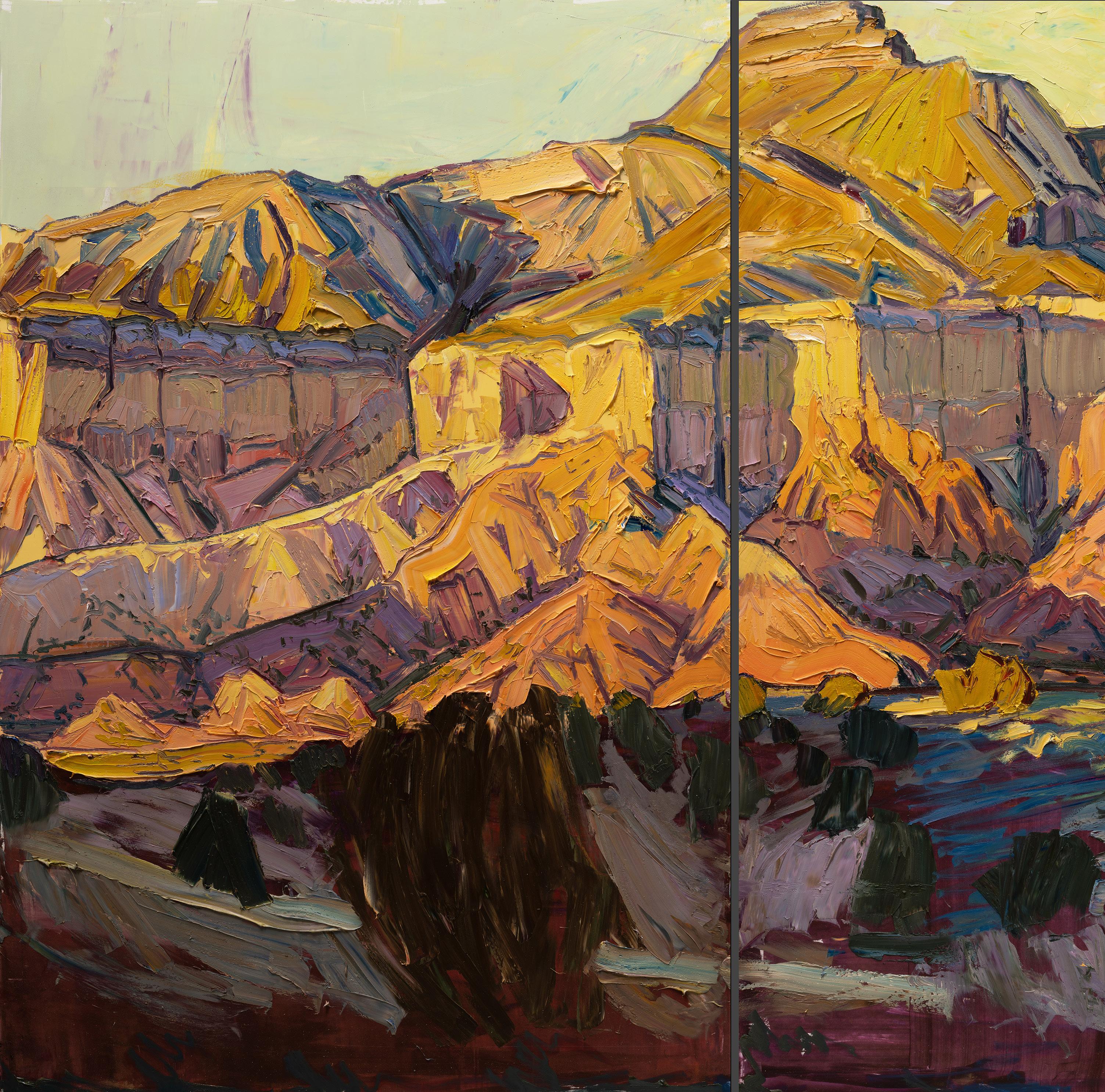
Parallax (Ghost Ranch)
2025, oil on three panels, 72” x 144”
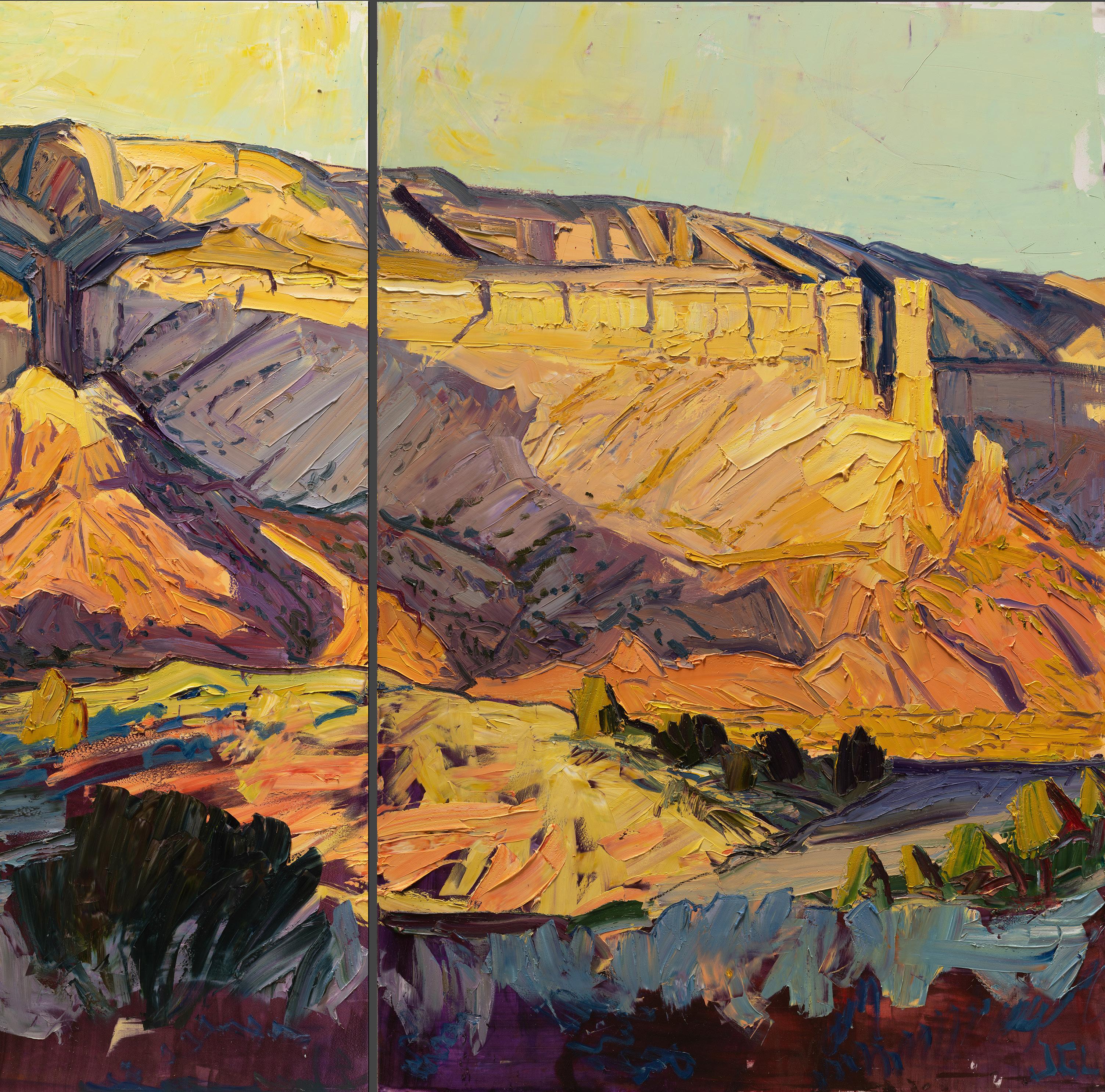
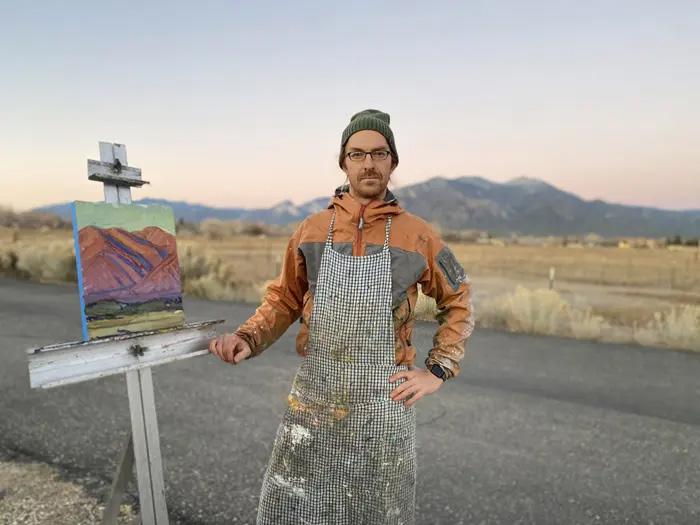
history and forward to no one knows where. “The dream,” says Jung, “is a little hidden door in the innermost and most secret recesses of the soul, opening into that cosmic night which was psyche before there was any ego-consciousness...” And in this work and show, the dream opens into the landscape, the great miraculous continuity that we are inextricably linked to – at once, one and all, part of.
The largest work in Dreamtime Emissaries, Parallax (Ghost Ranch), 72” x 144.5”, is also among my personal favorites, and ended up being a meaningful capstone to the making of this show. It started in a dream: on a huge wall hung an enormous painting of Piedra Lumbre at Ghost Ranch, dwarfing everything, a painting that literally moved as if it were a window into the actual landscape. The closer I got,
the more a dark foreground hill receded and the more a profoundly beautiful sunset-soaked peak rose. It was a powerful, bewildering sensation. And it’s the reason for the work’s title: “Parallax” describes how perspective on something shifts depending on one’s position.
Parallax (Ghost Ranch) changed my thinking about Dreamtime Emissaries, and continues to alter my thinking about painting. It reaffirmed the power and mystery of dreaming in my life, and underlined the multilayered, timeless, moving ways that dreams can ripple throughout important endeavors. It also inspired a novel, hybrid studio and on-location painting process that is heretofore unique in my practice: rather than find a spot and start painting outside, I started in the studio, first laying out the painting
based on what I saw in dreamtime. And then I went and found the actual location in the landscape to finish the piece.
Working with the dream brought me back to paint in a place I dearly regard, after an extended hiatus: the land beneath Cerro Pedernal – Flint Mountain – between Abiquiu, NM, and Christ in the Desert Monastery, where Georgia O’Keeffe made her home and where many artists I respect have also wandered, painted, and found their own meaning in art.
Many people don’t know that this was, in a way, where I went to “art school.” It’s where I drove so frequently for years to catch sunrises and sunsets; where I struggled to find color; where I learned about composition in the infinite landscape. What is more, Abiquiu is where I first made my big leap into painting as a devotional act. It’s where I tried to reconcile the impossible scale of nature with the joyous, overwhelming ardor welling up in my heart. I started painting a decade before I really found Abiquiu, but it’s where I returned again and again to find my pulse, and the blood of why I do what I do.
It is fitting, then, and an unplanned coincidence, that a number of dreams in the early years led me there, showing me locations and advising me on how to approach them, challenging me to do what I had yet to do – and what I didn’t know was possible. With the help of dreams, I started learning how to make space for the unexpected to shape my work and my life.
As I finished painting Parallax (Ghost Ranch) –standing beneath the monolithic grandeur of Ghost Ranch, feet on soft red dirt and dry grass, the smell of sagebrush occasionally rising into my awareness – a density of quiet fell over the work and solitude suffused the landscape. The last angling rays of light cast a salmon glow onto the high peaks and mesa cliffs. I felt small in the face of such splendor; I felt
accomplishment and trepidation about the piece. That I even found the spot from my dream reverberated again through my body. I wondered whether there were any pottery shards nearby, thought about artists before me who’d painted this place, and then in a flash remembered that dinosaurs roamed under the same peaks only a little long time ago.
Twelve years ago, a couple of hours before sunrise, I awoke from the first dream that inspired me to venture out to paint beneath Flint Mountain. And on this night, with this behemoth piece, I was back, entirely unexpectedly – again prompted by dreamtime emissaries to stretch beyond the world I’d known.
- Jivan Lee
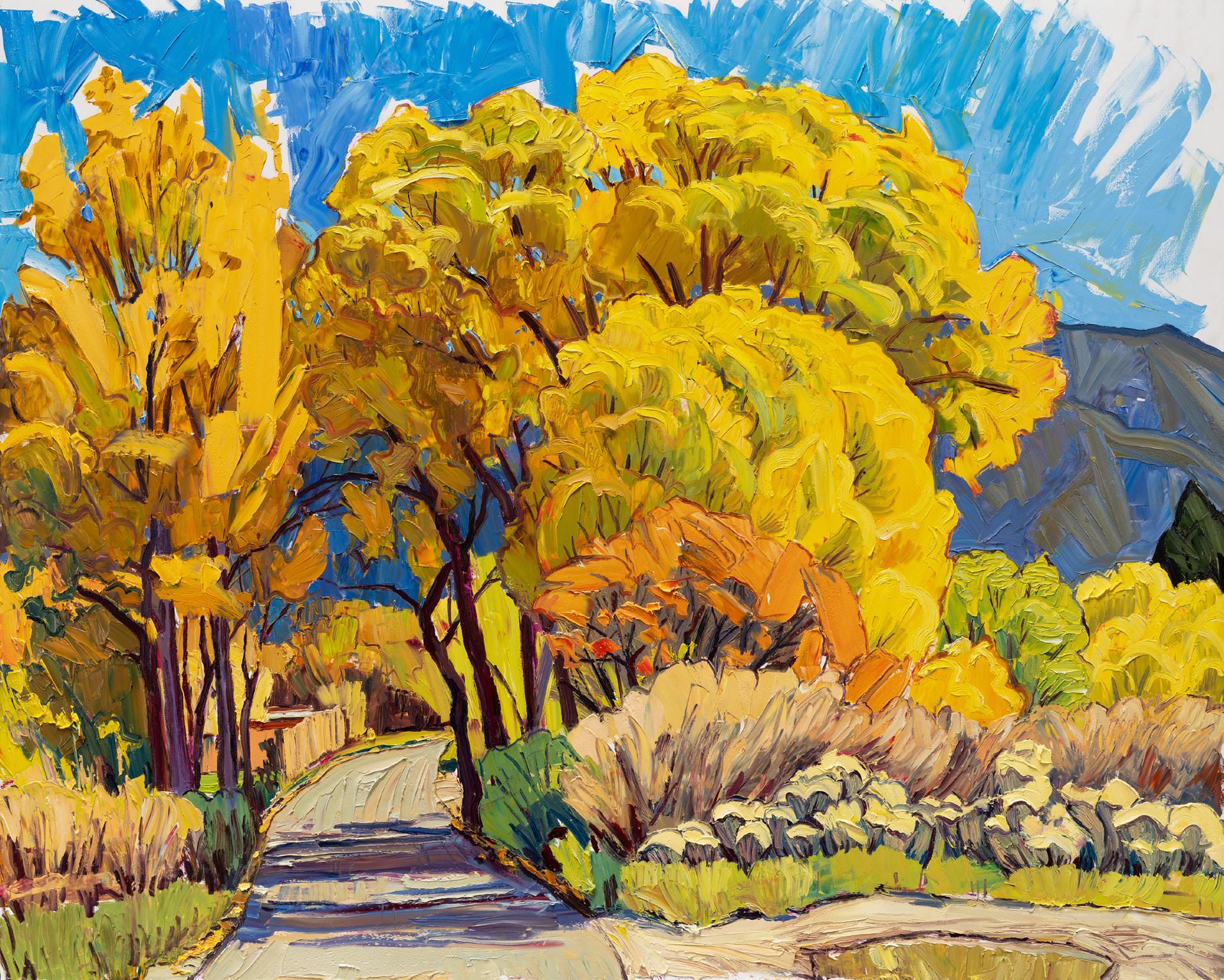
Place 2024,
Meeting
oil on panel, 48” x 60”
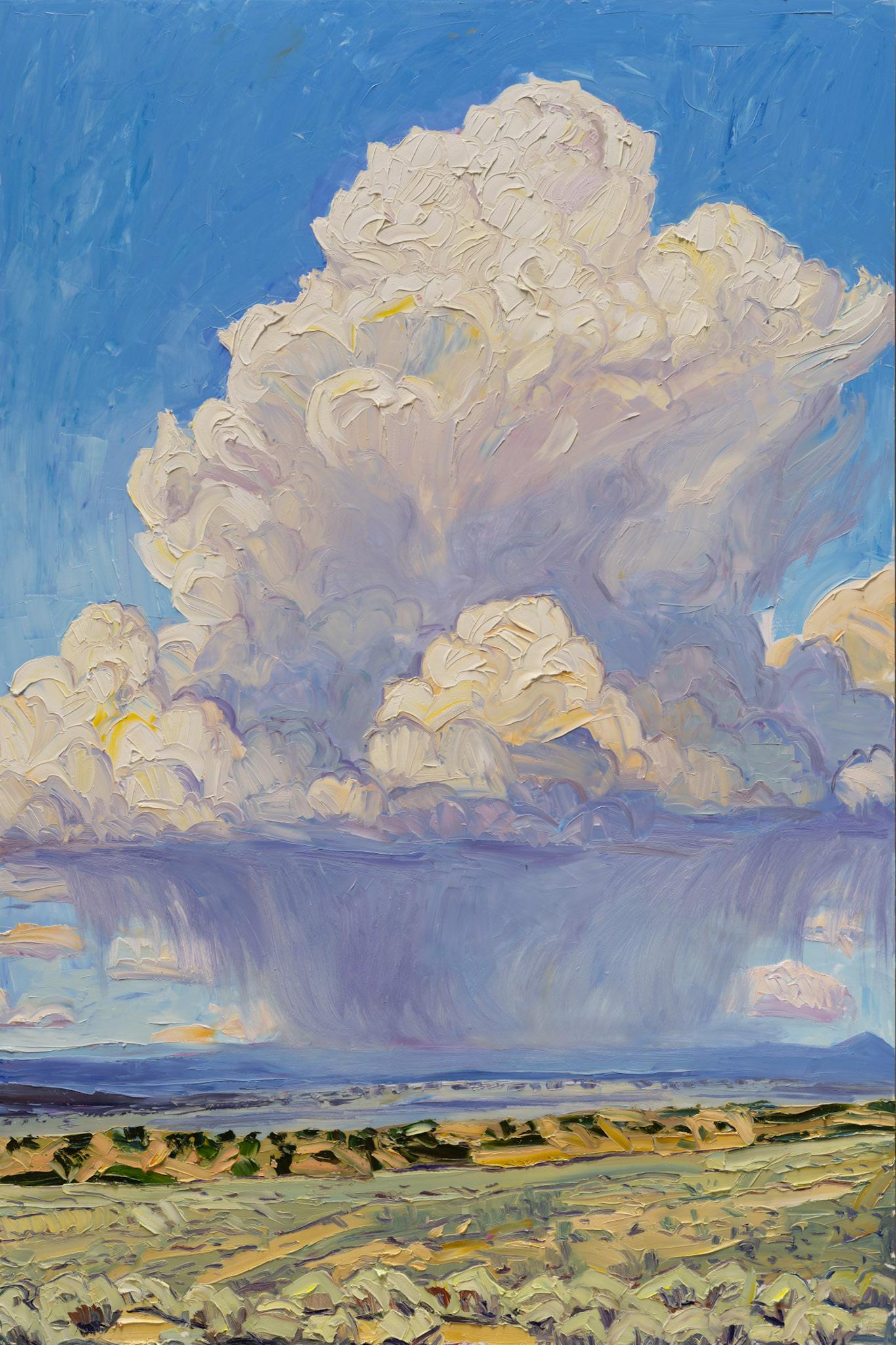
Dreamtime Emmissary #1 - Tophat Thunderhead 2024, oil on panel, 72” x 48”
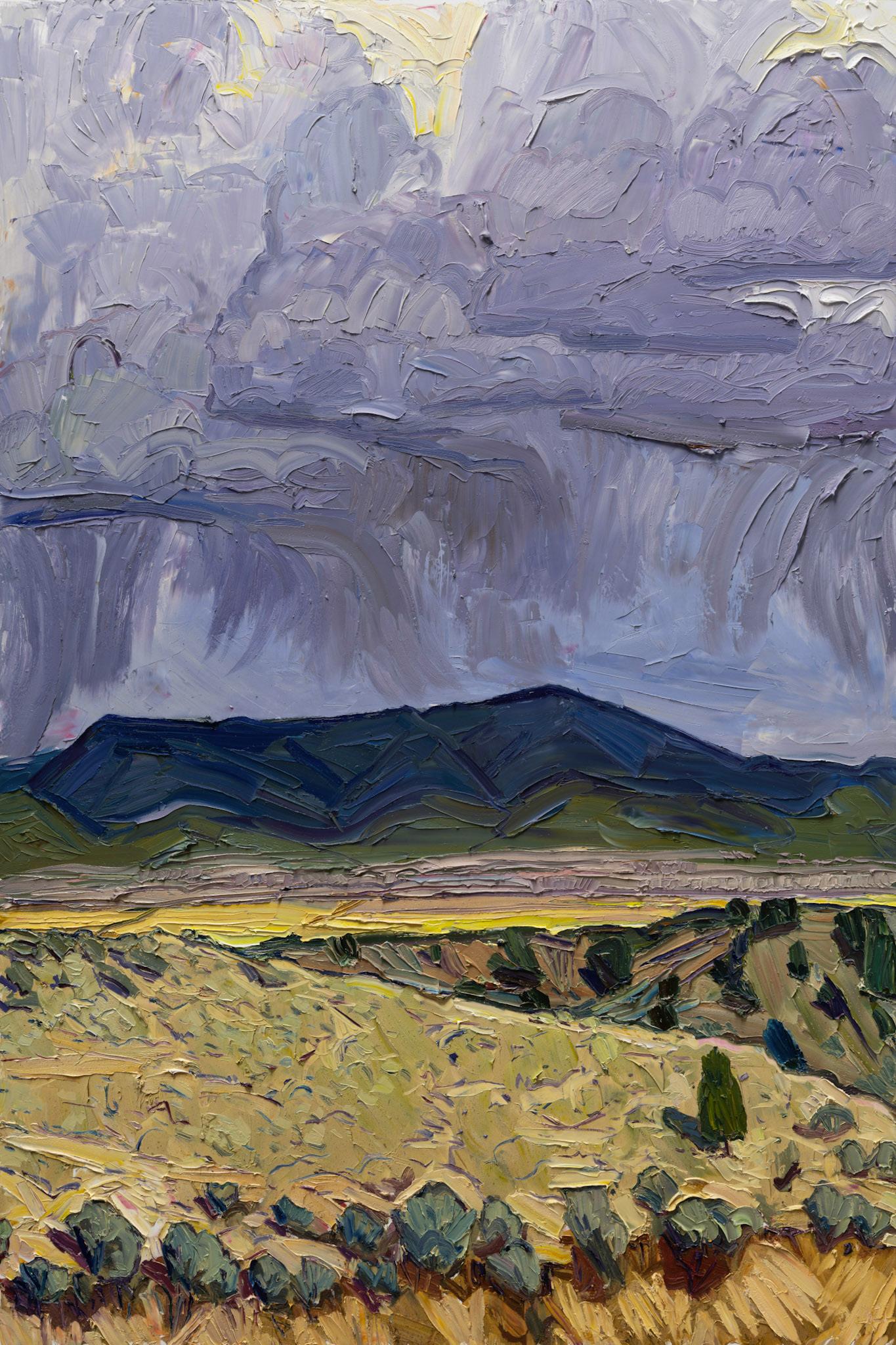
Homeward Calm
2025, oil on panel, 72” x 48”
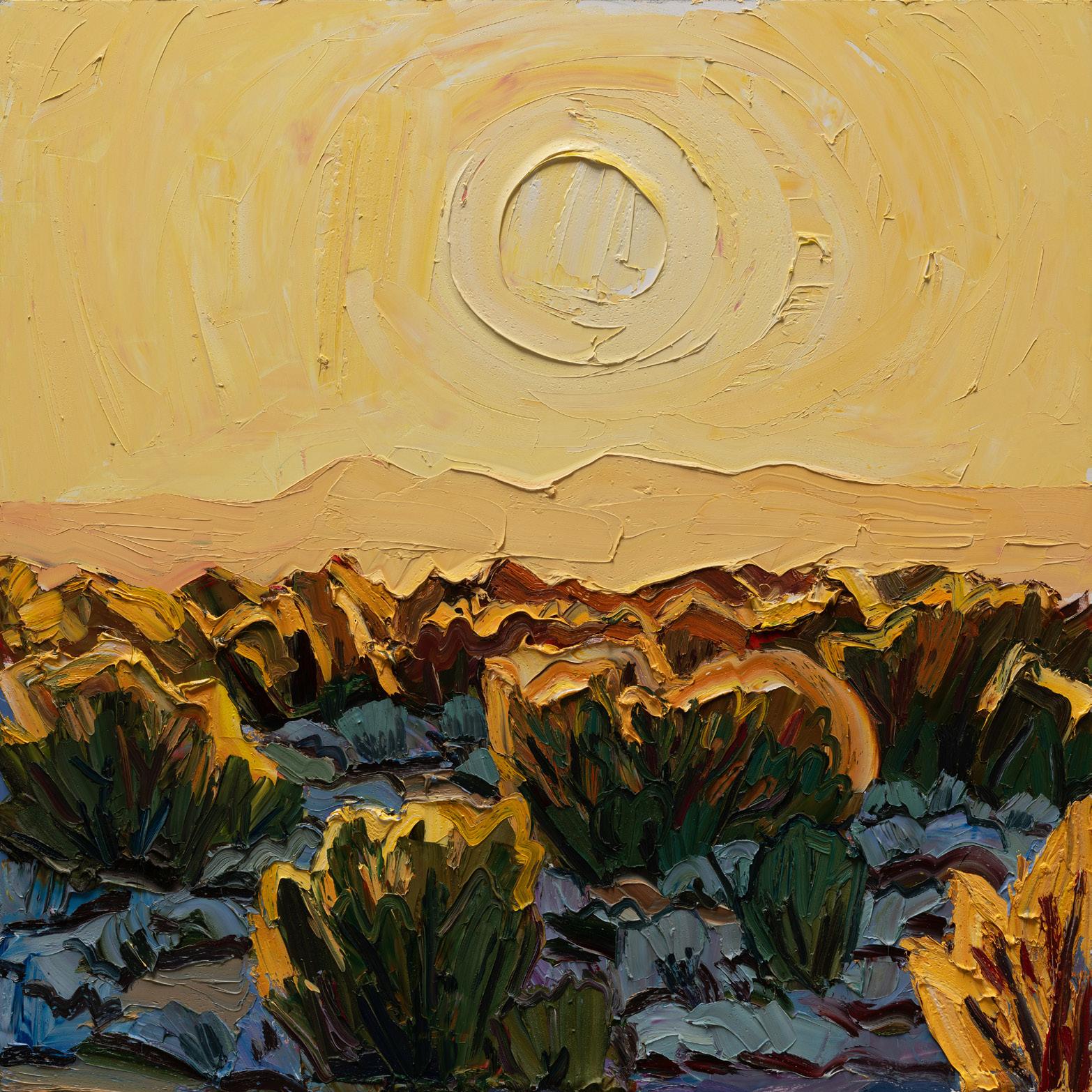
Rift Valley - Belonging 2025, oil on panel, 36” x 36”
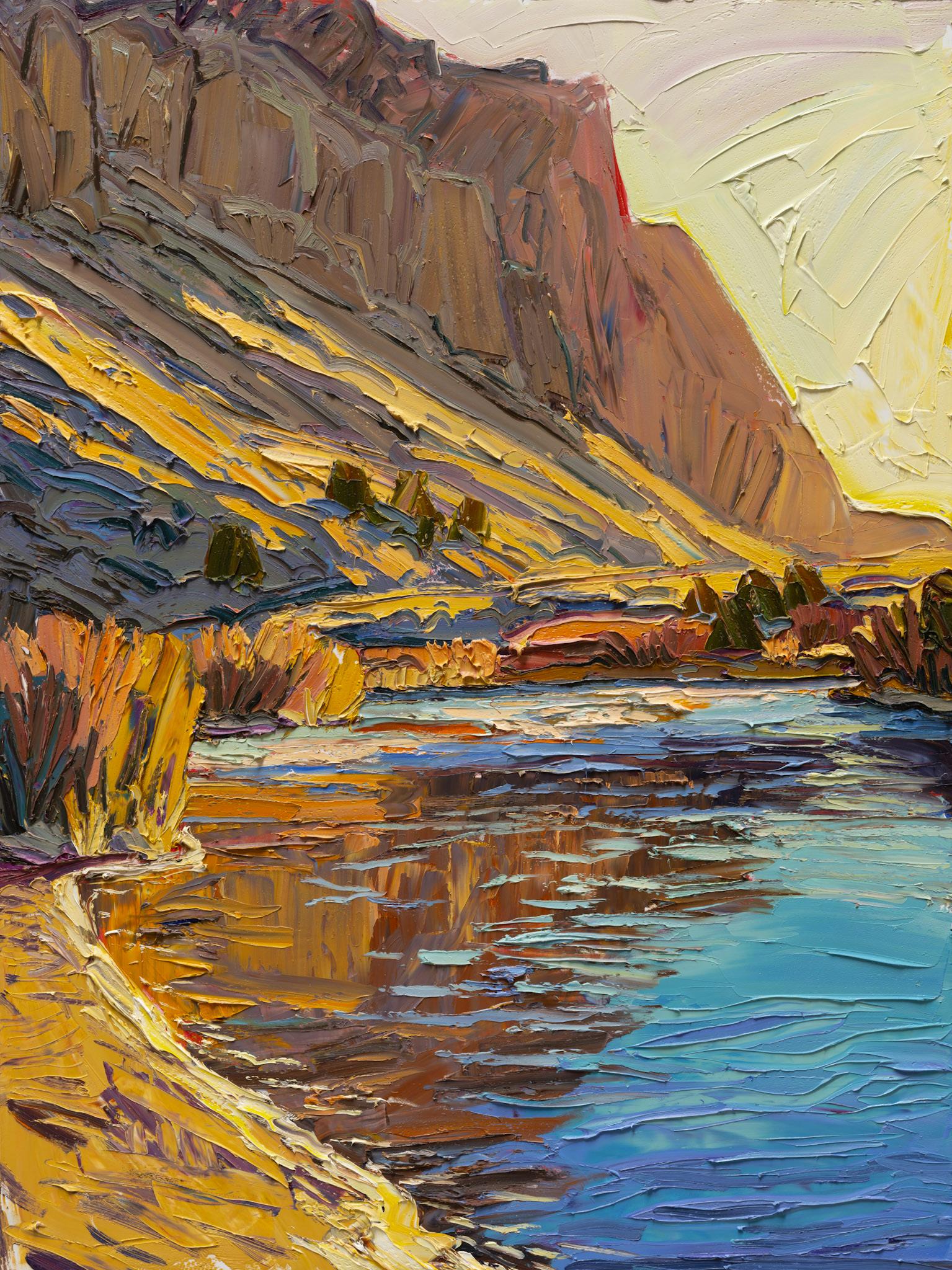
Quartzite - Bend in the River #1 2025, oil on panel, 40” x 30”
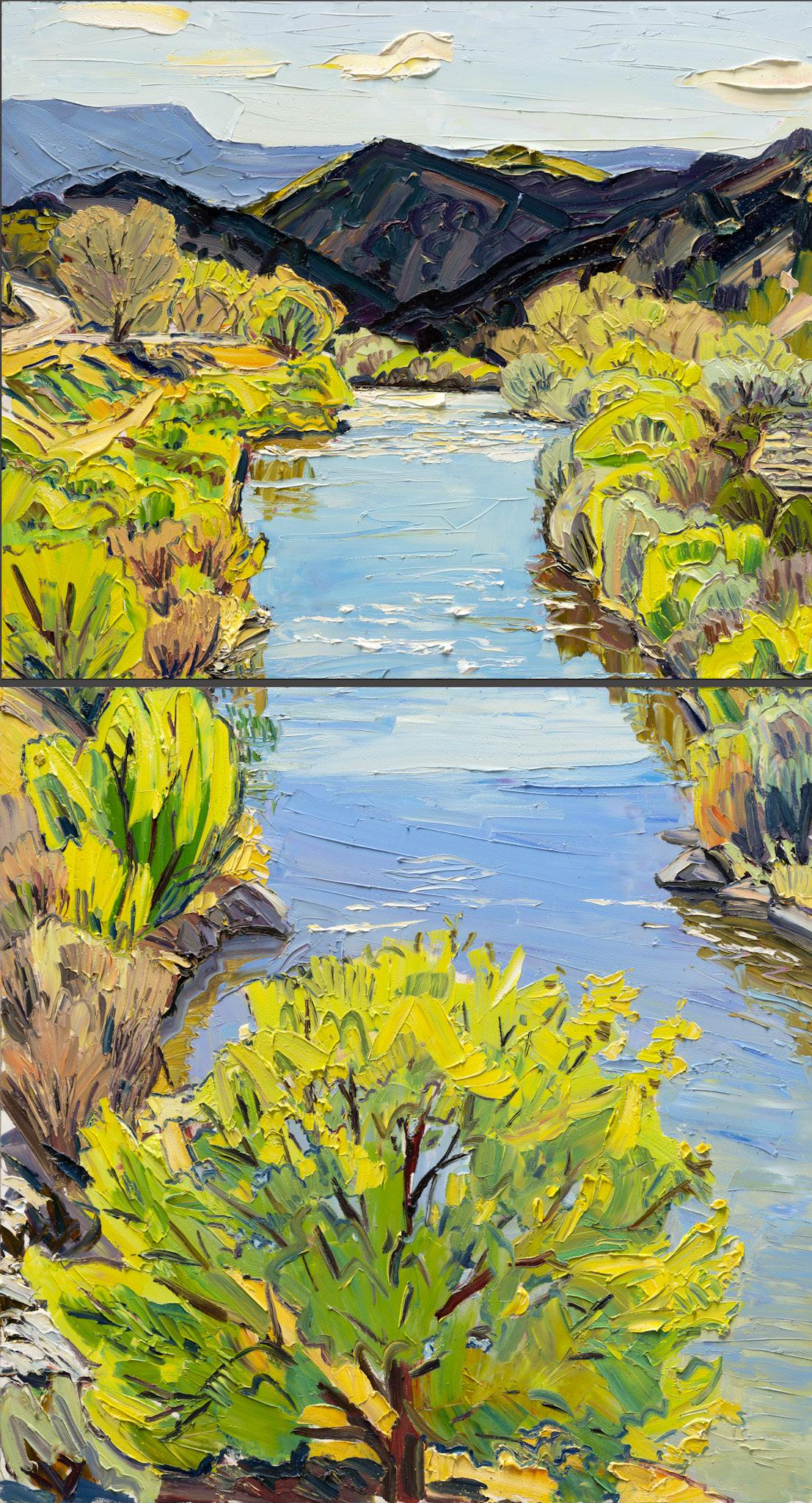
County Line - Eagle Eats Snake #5 2025, oil on two panels, 66” x 36”
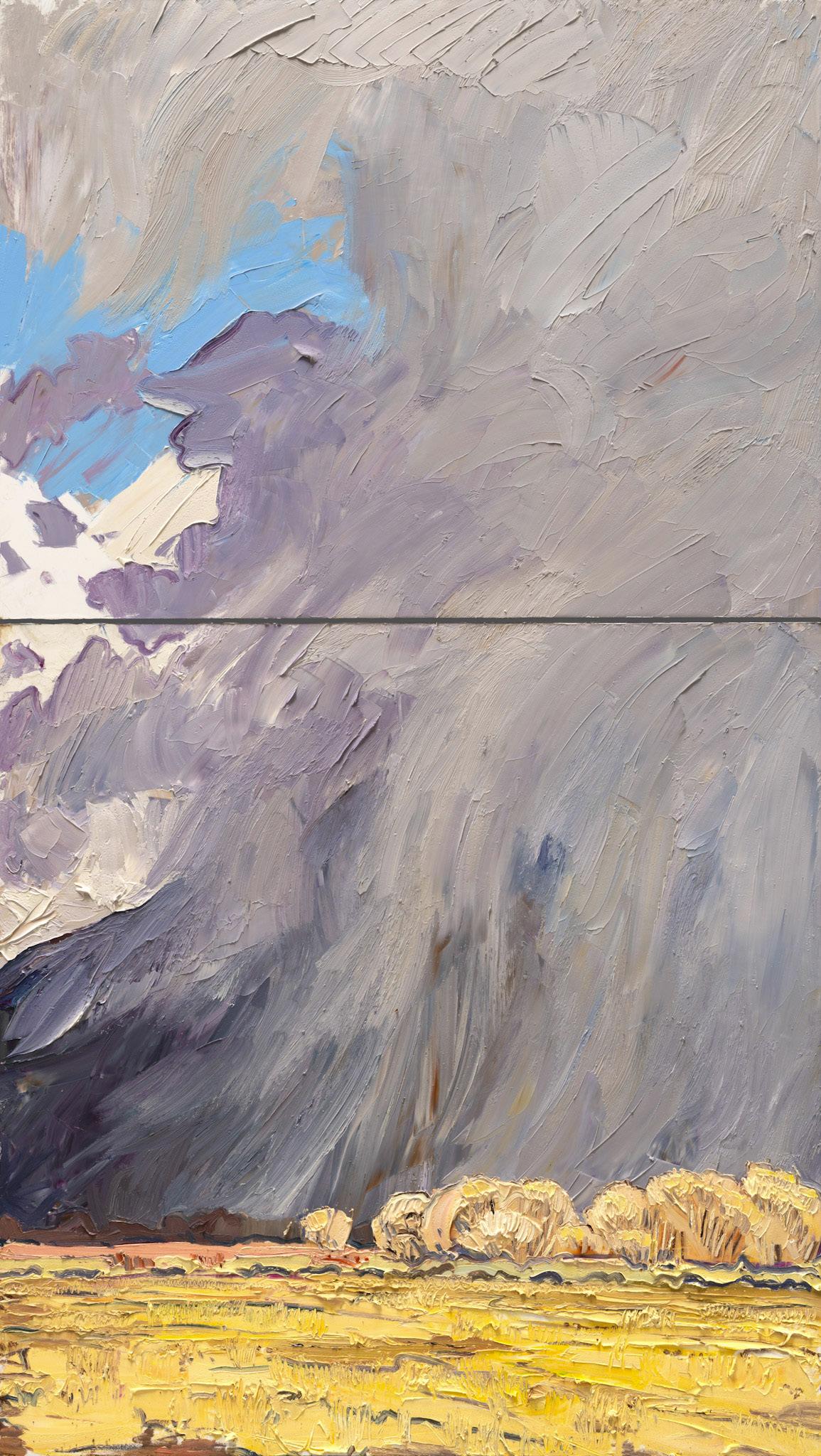
Taos Mountain - Eagle Sentinel 2025, oil on two panels, 70” x 40”
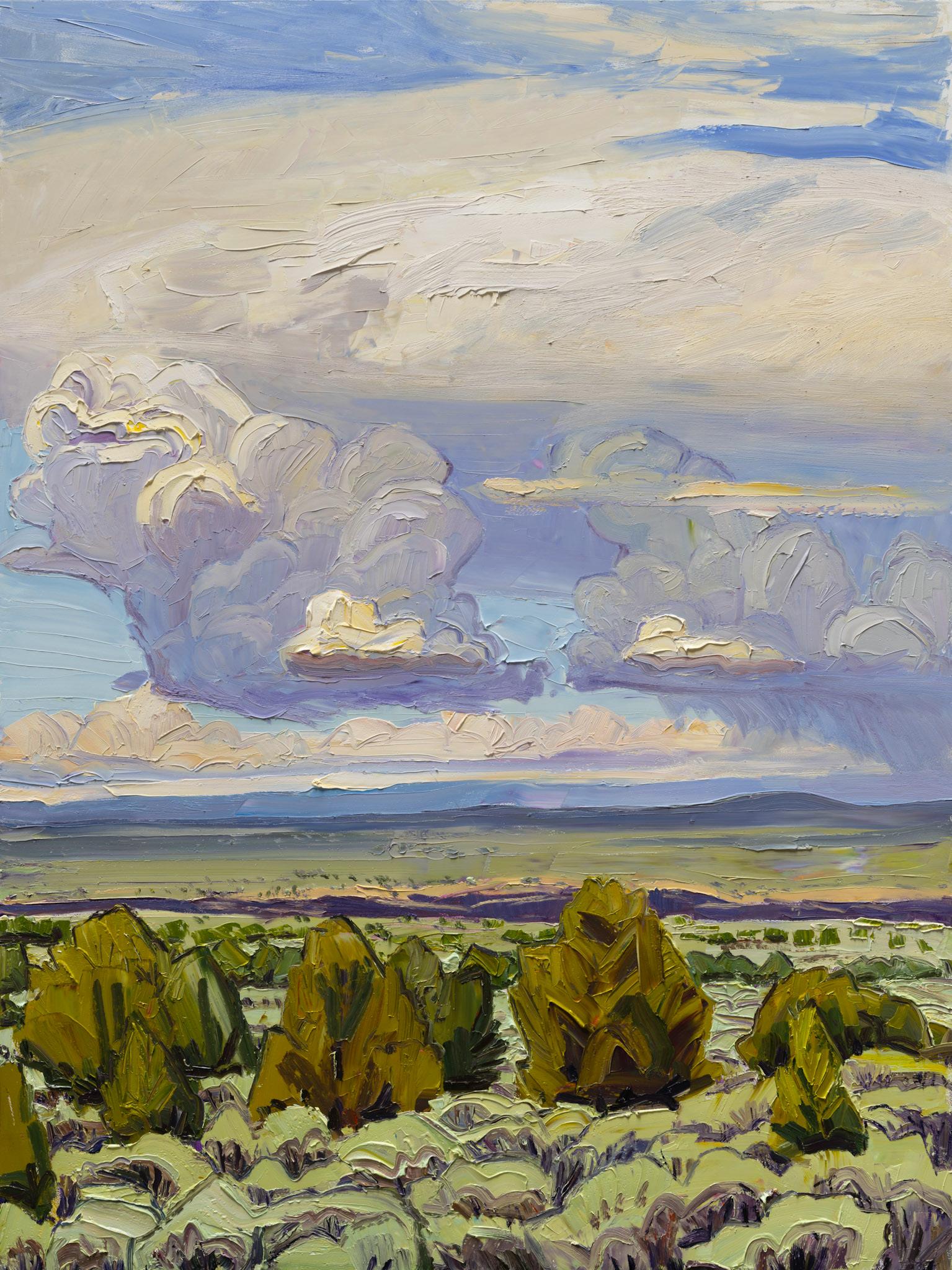
Rift Valley - Under Cover 2025, oil on panel, 48” x 36”
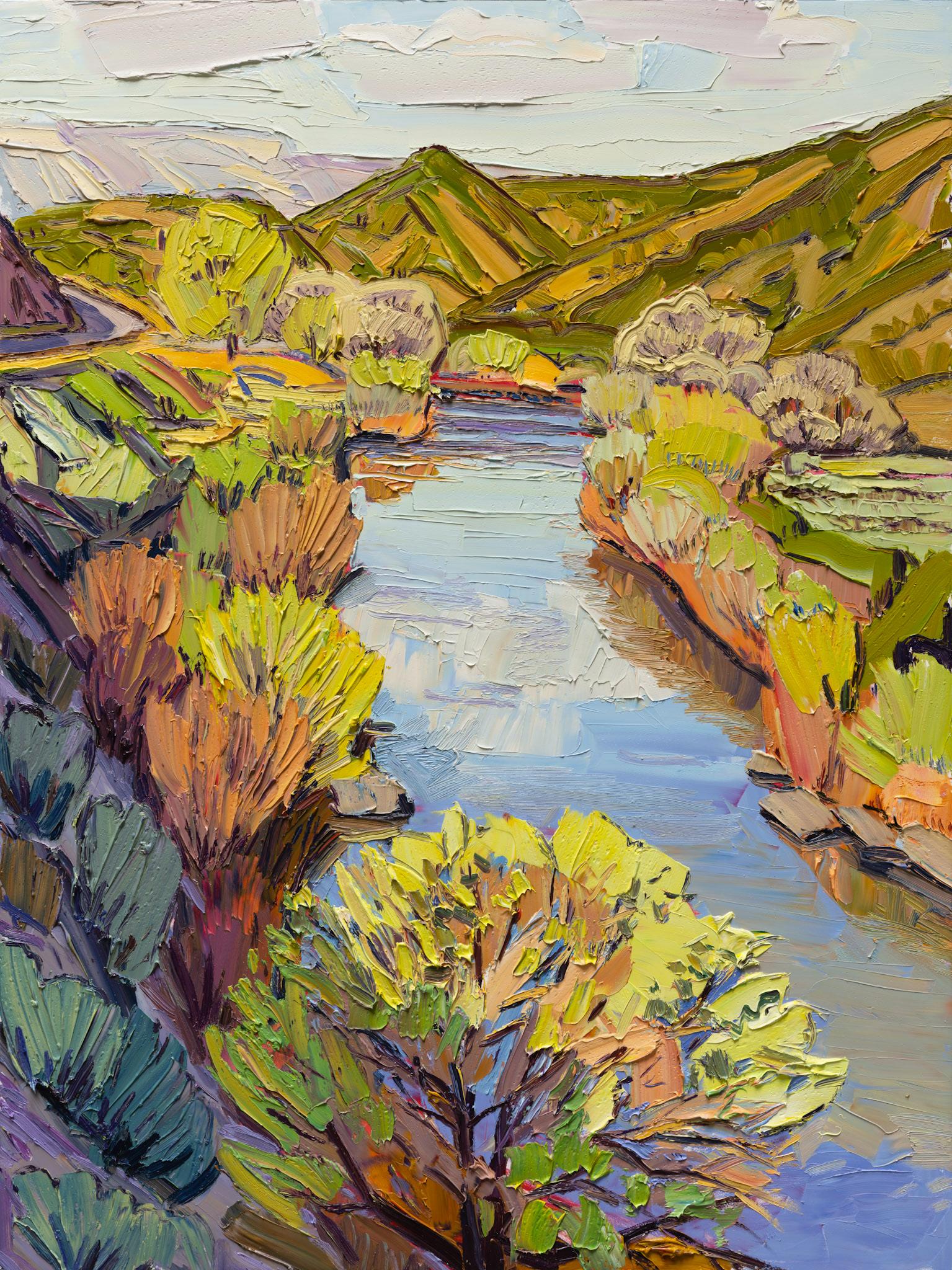
County Line - Eagle Eats Snake #4
2025, oil on panel, 40” x 30”
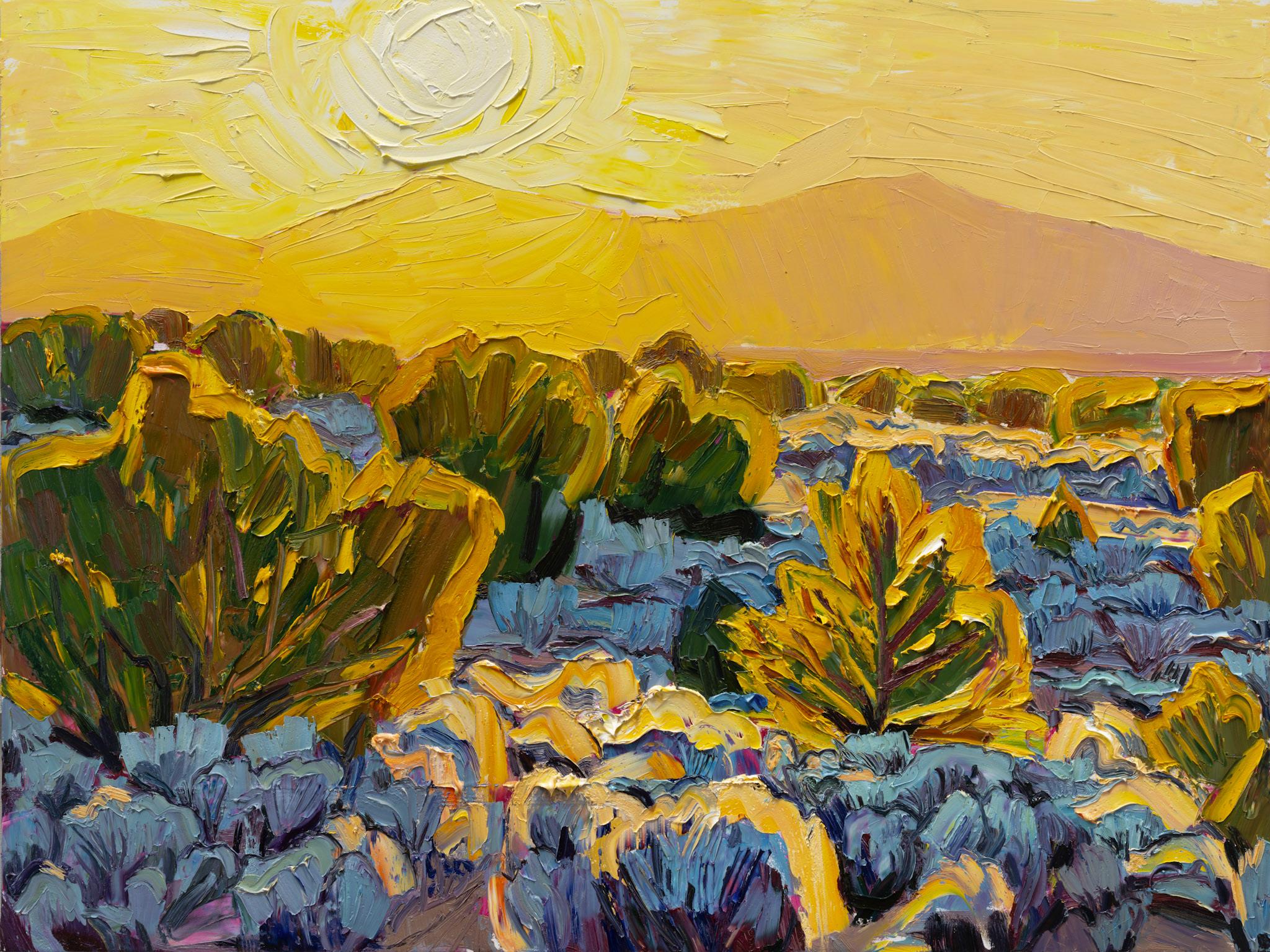
Rift Valley - Time (Sundown) 2025, oil on panel, 30” x 40”
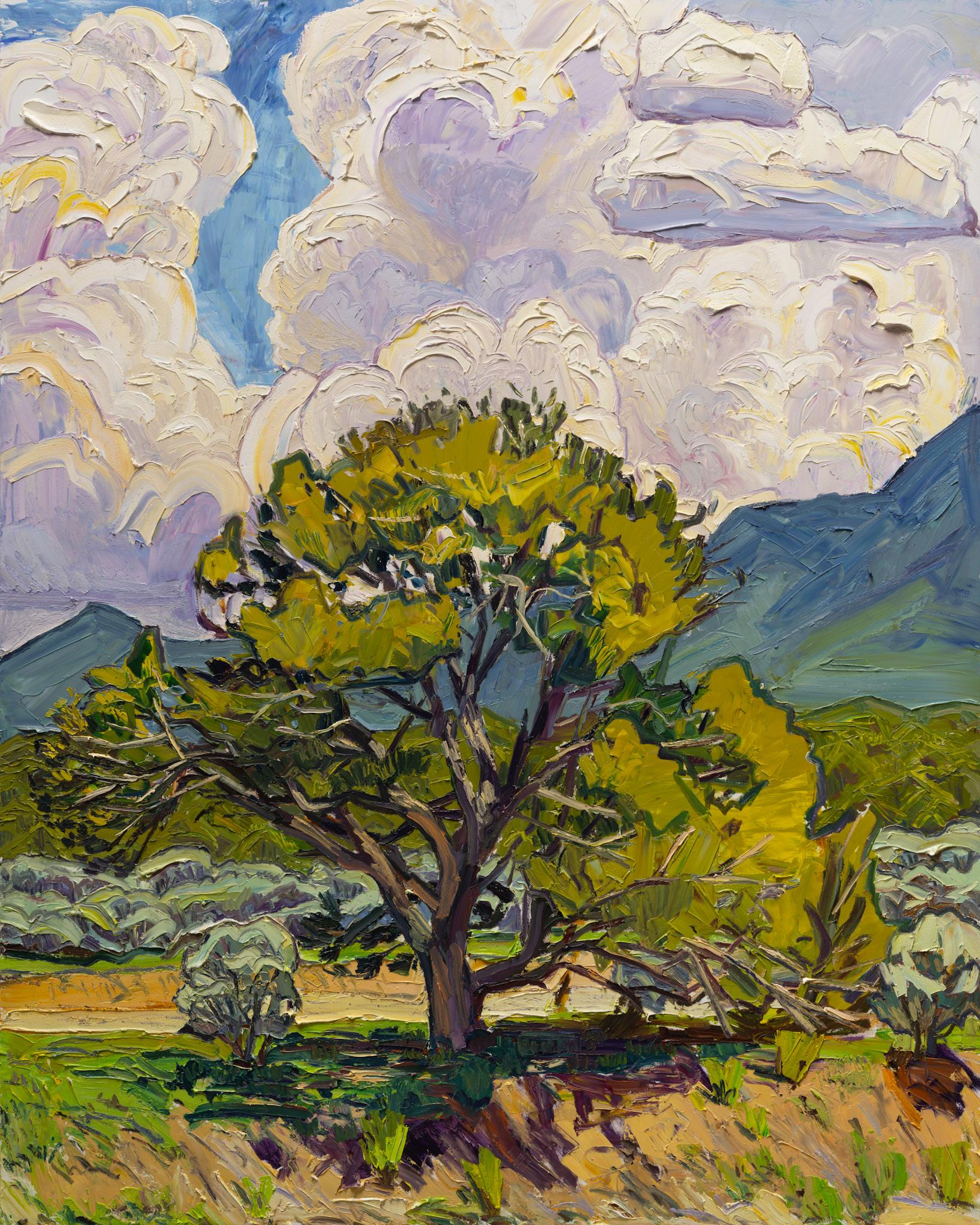
Rift Valley - Standing at the Intersection 2025, oil on panel, 60” x 48”
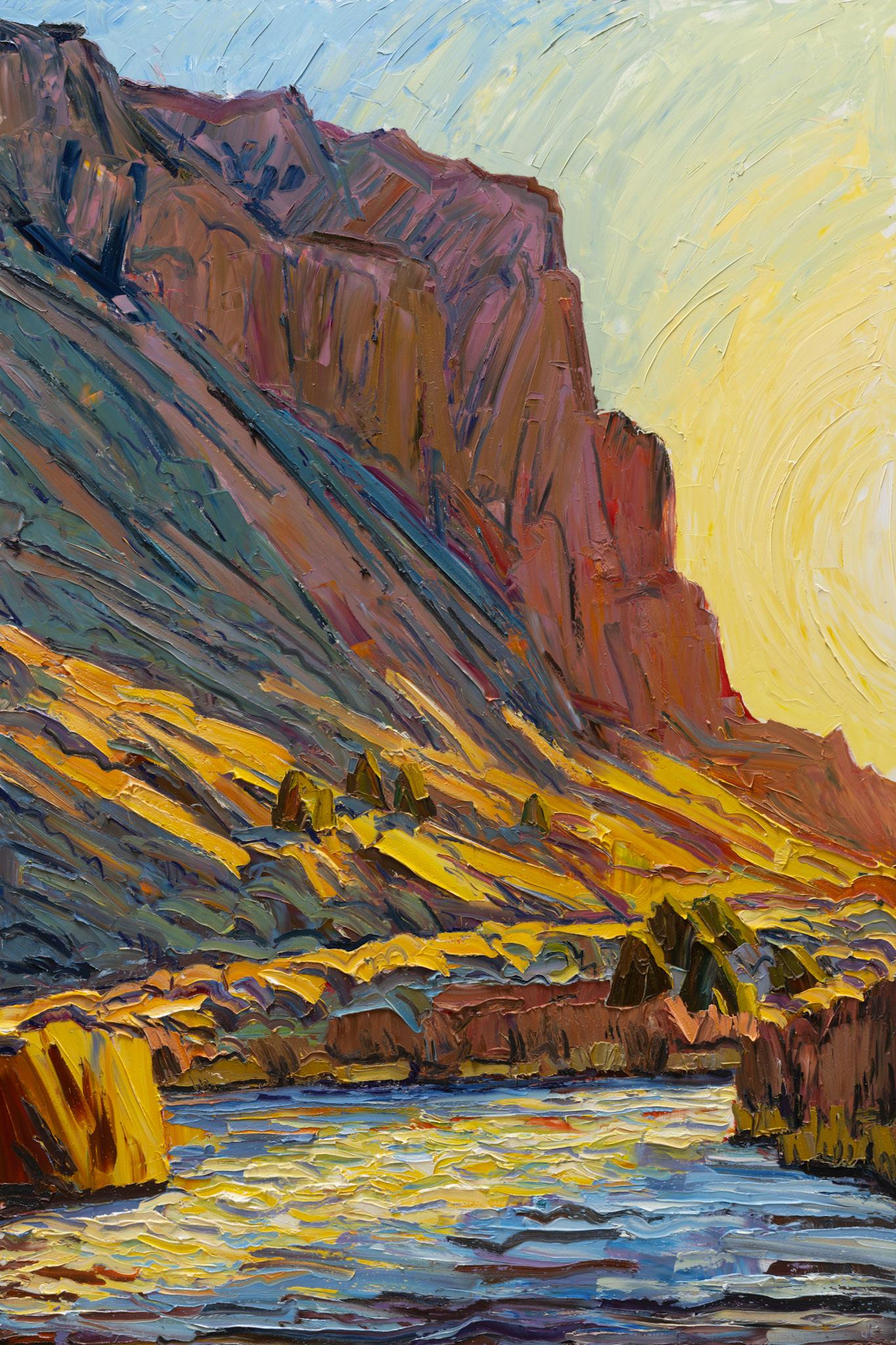
Quartzite - Days End 2025, oil on panel, 72” x 48”
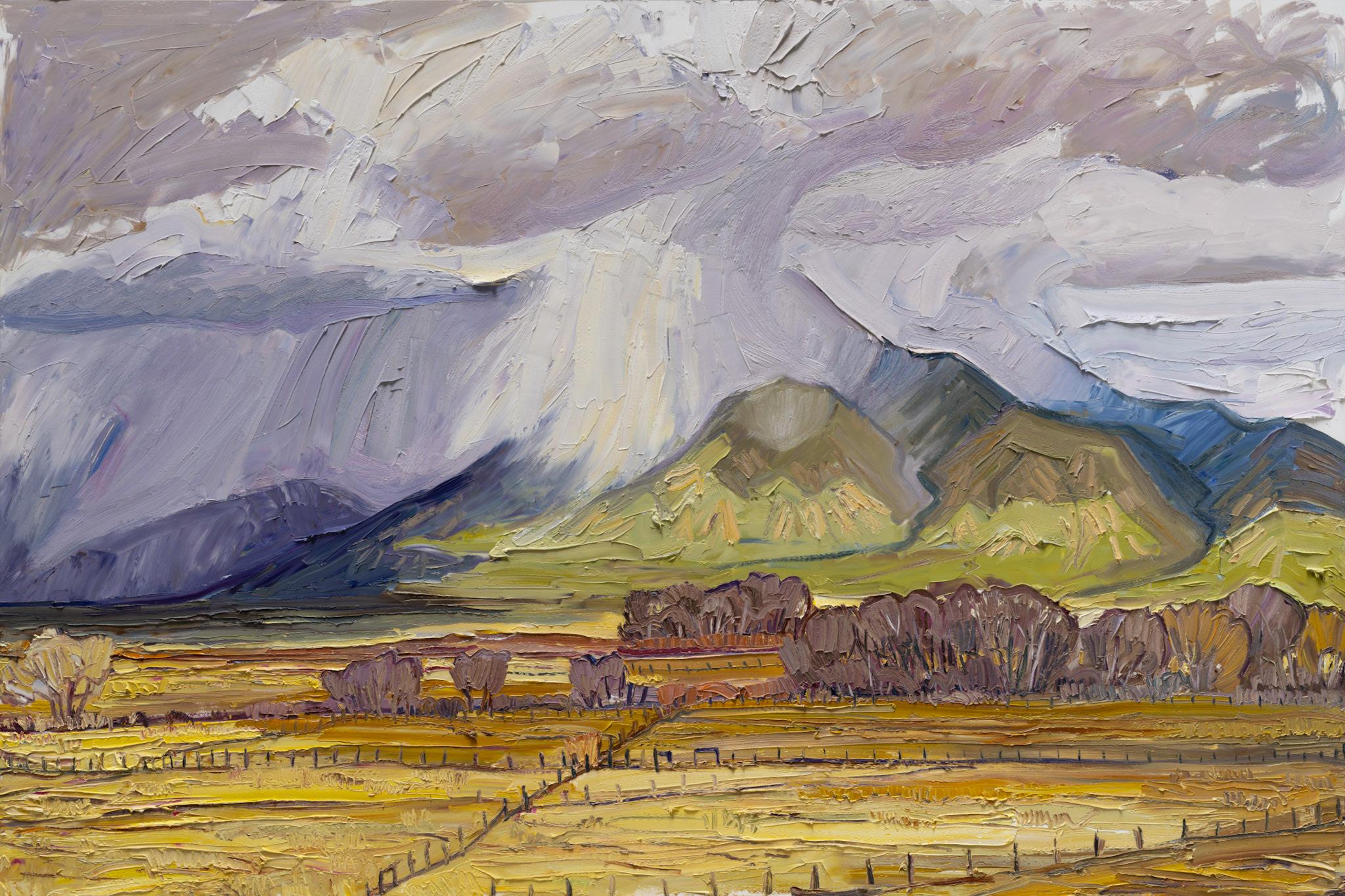
Taos Mountain - Storm Cycle 2025, oil on panel, 48” x 72”
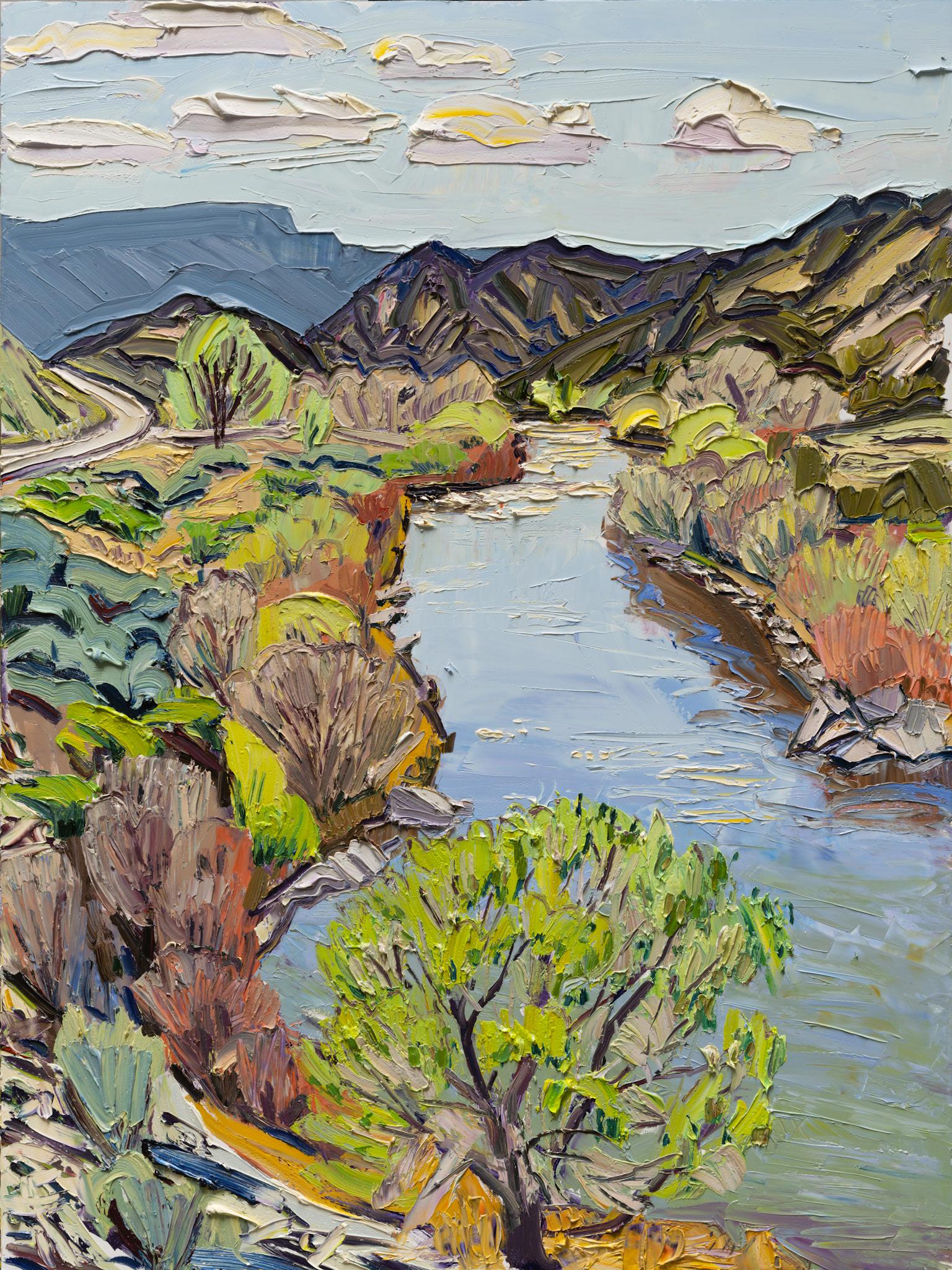
County Line - Eagle Eats Snake #1 2025, oil on panel, 40” x 30”
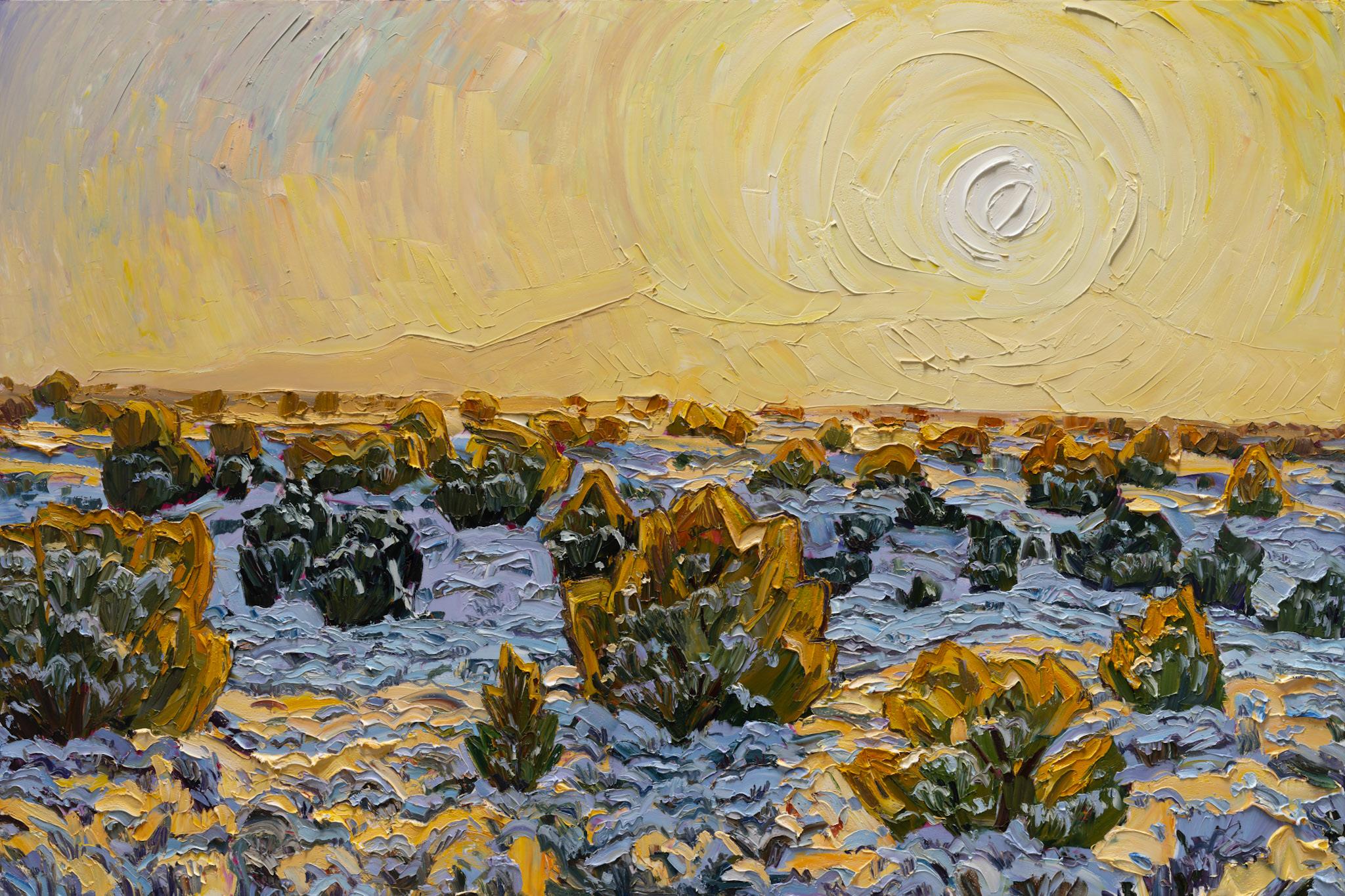
Rift Valley - Snow 2024, oil on panel, 48” x 72”
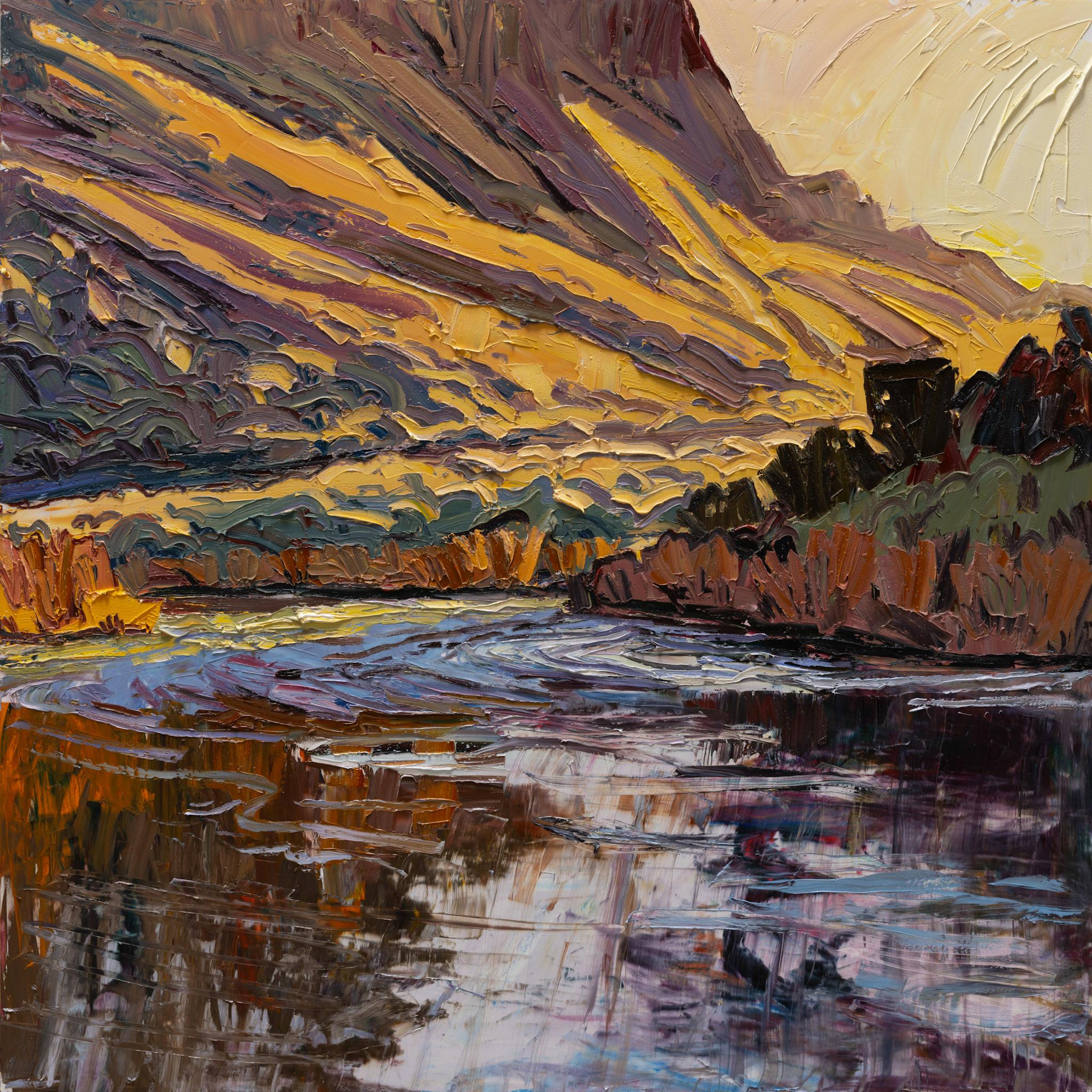
Quartzite Sunset- Finding Coherence 2025, oil on panel, 48” x 48”
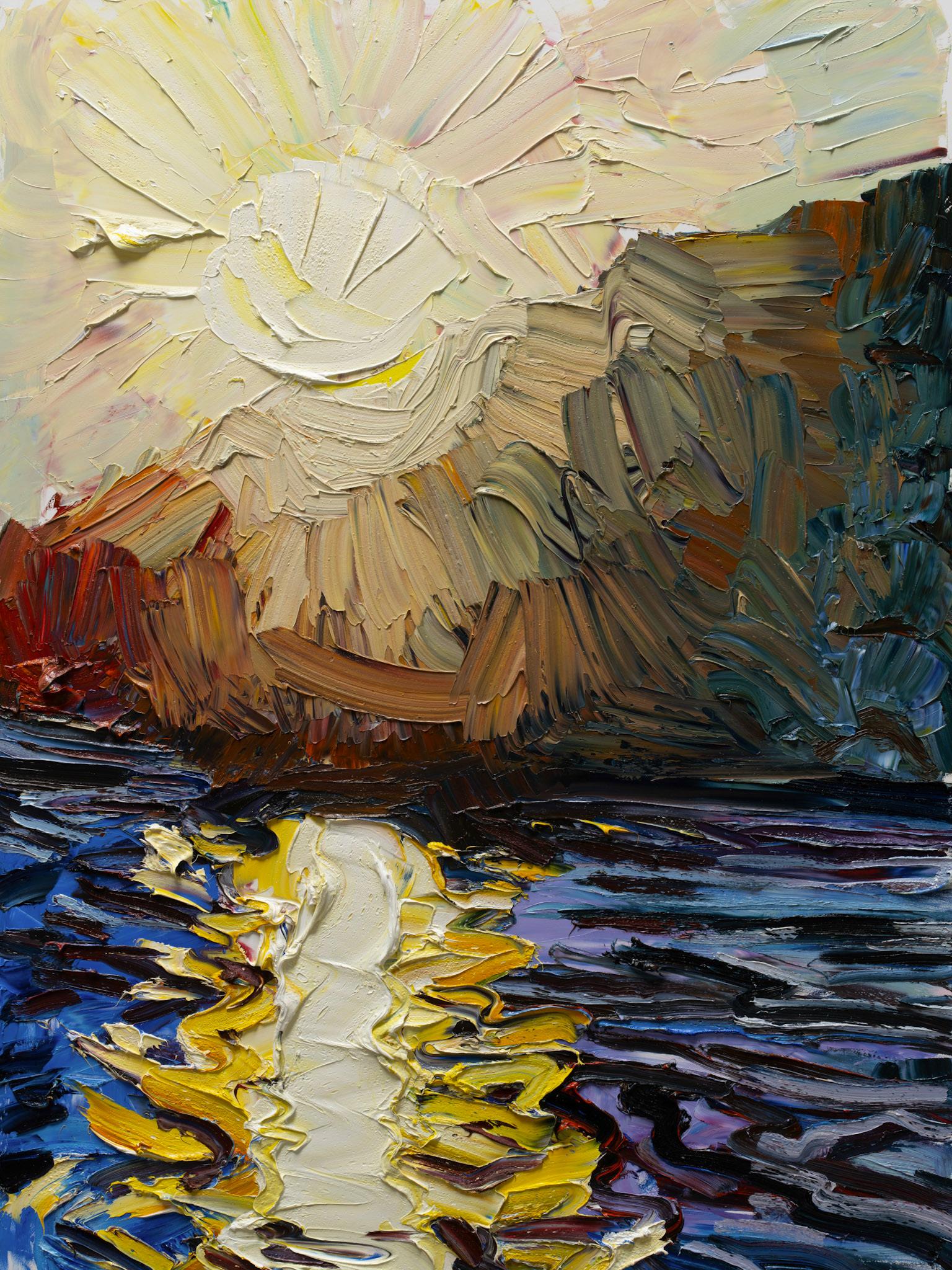
Quartzite - Bend in the River #2 2025, oil on panel, 40” x 30”
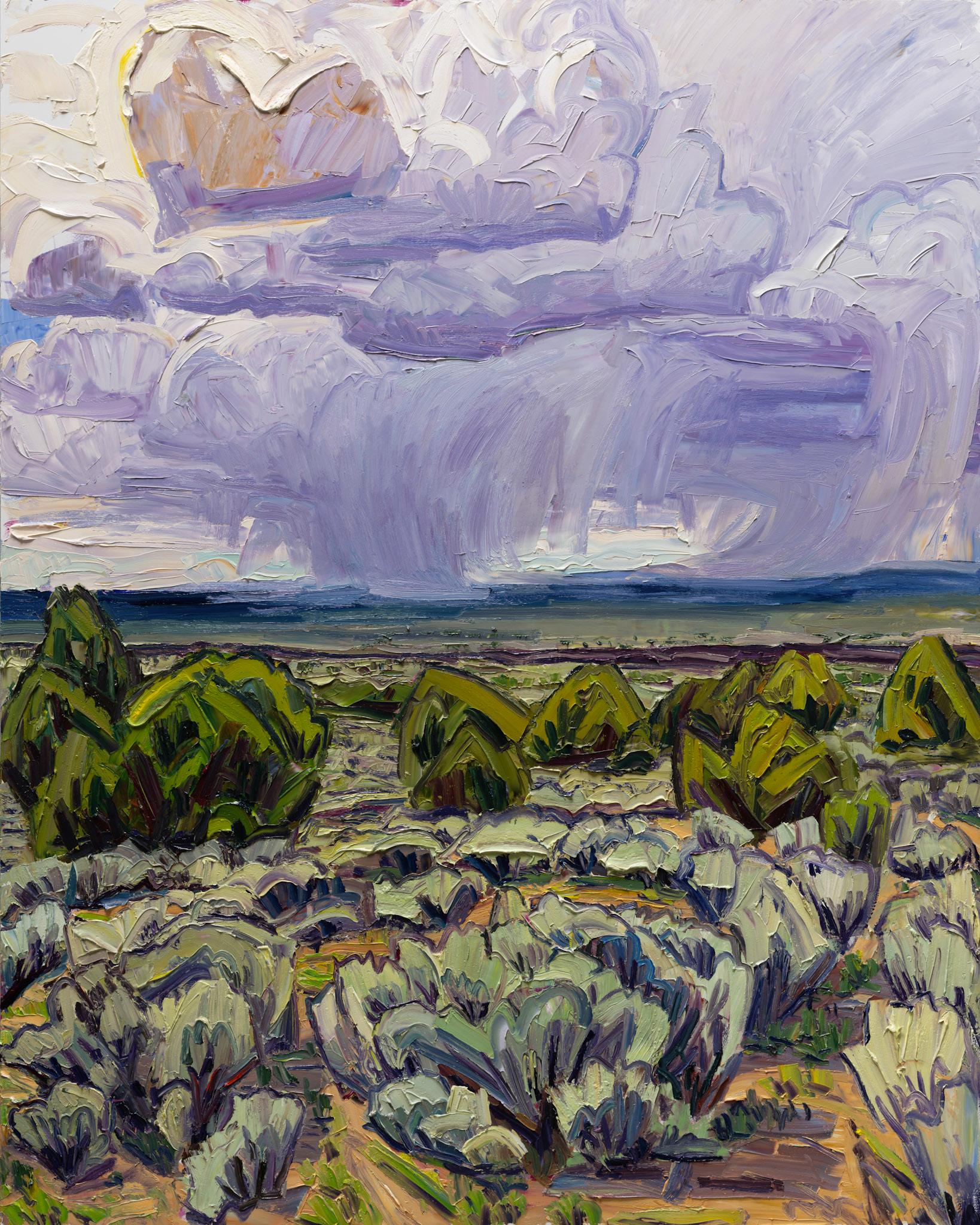
Rift Valley - Collision Course 2025, oil on panel, 60” x 48”
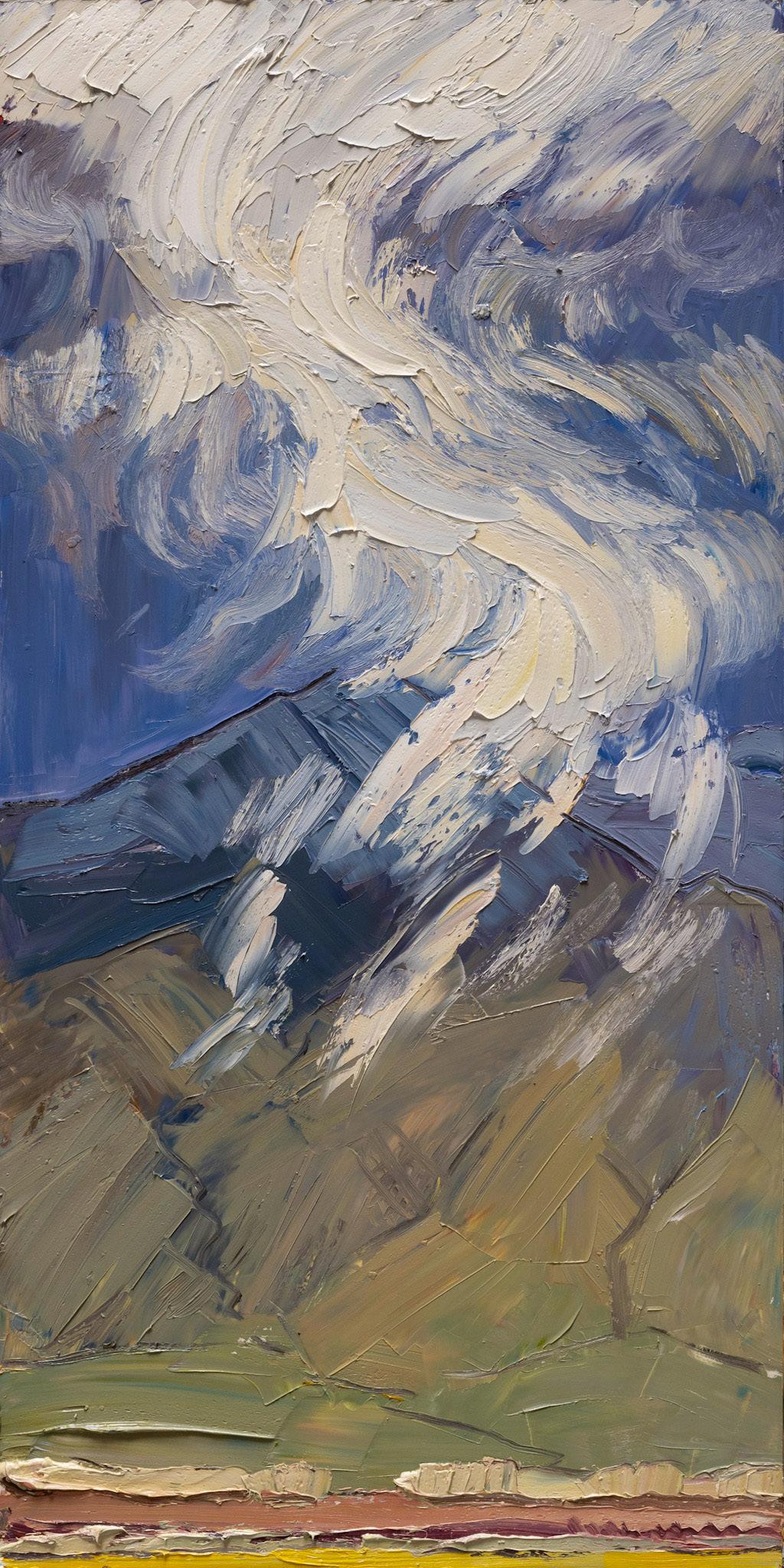
Taos Mountain - Apparition 2025, oil on panel, 36” x 18”
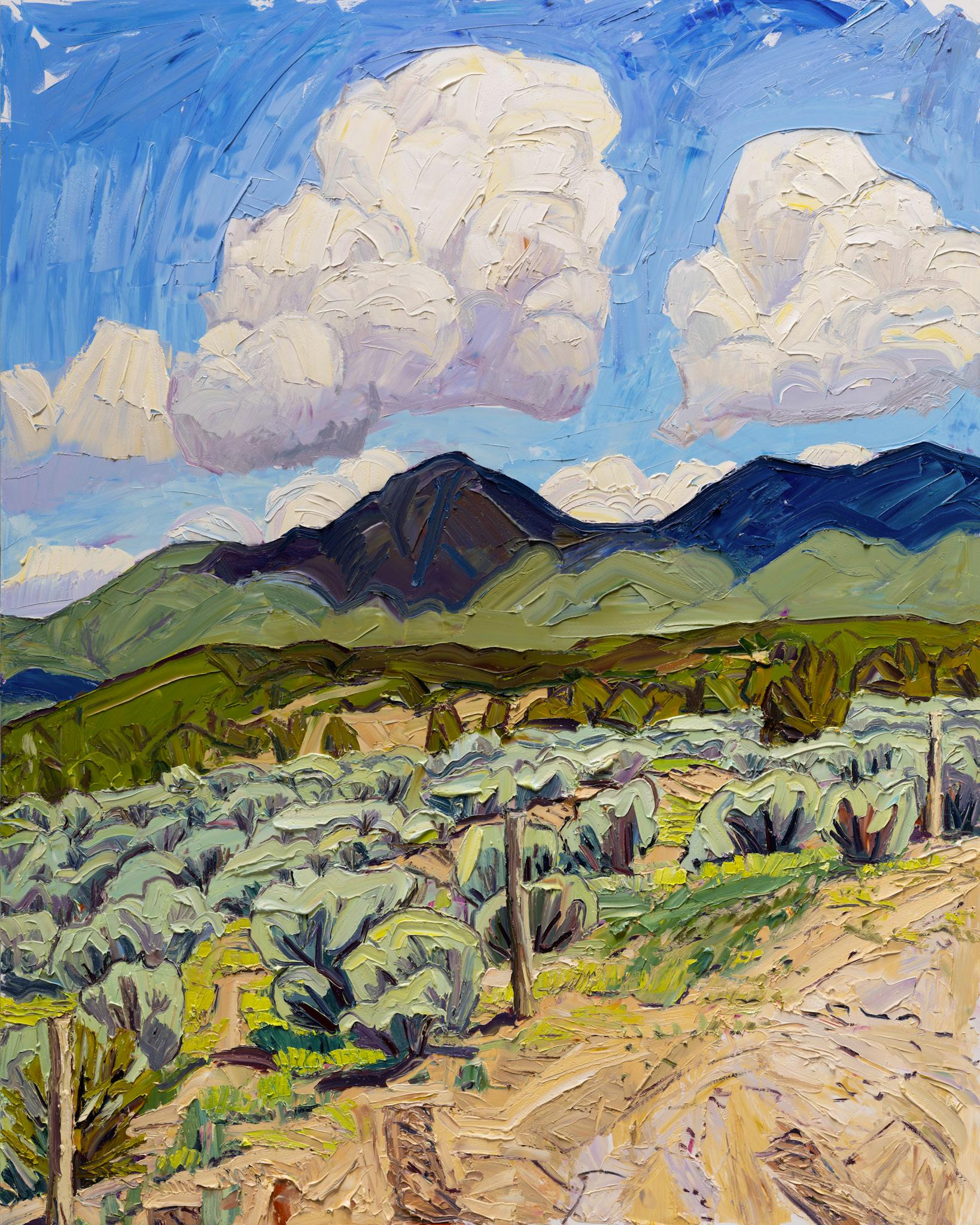
Rift Valley - Three Posts 2025, oil on panel, 60” x 48”
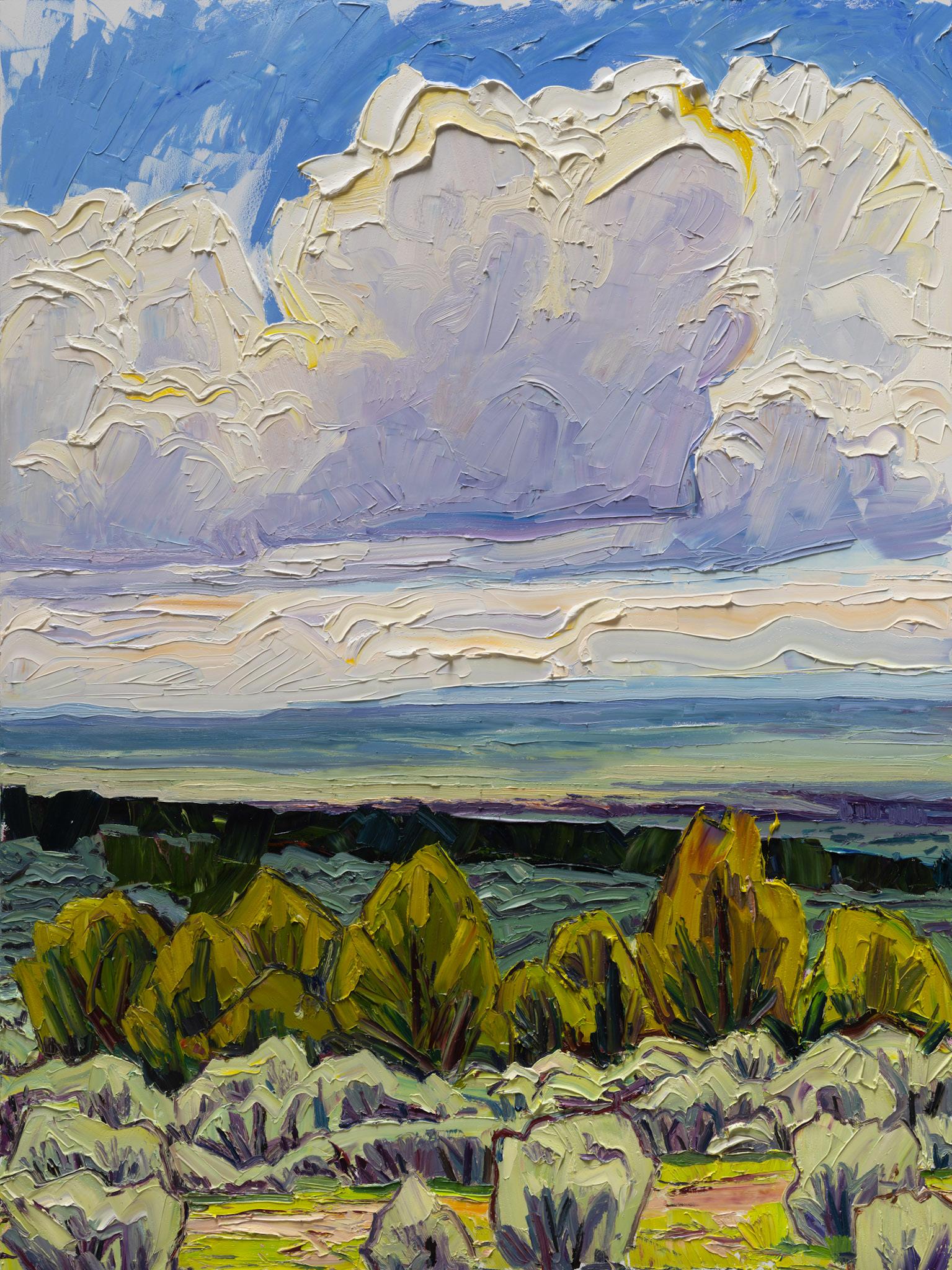
Rift Valley - Candlesticks 2025, oil on panel, 48” x 36”
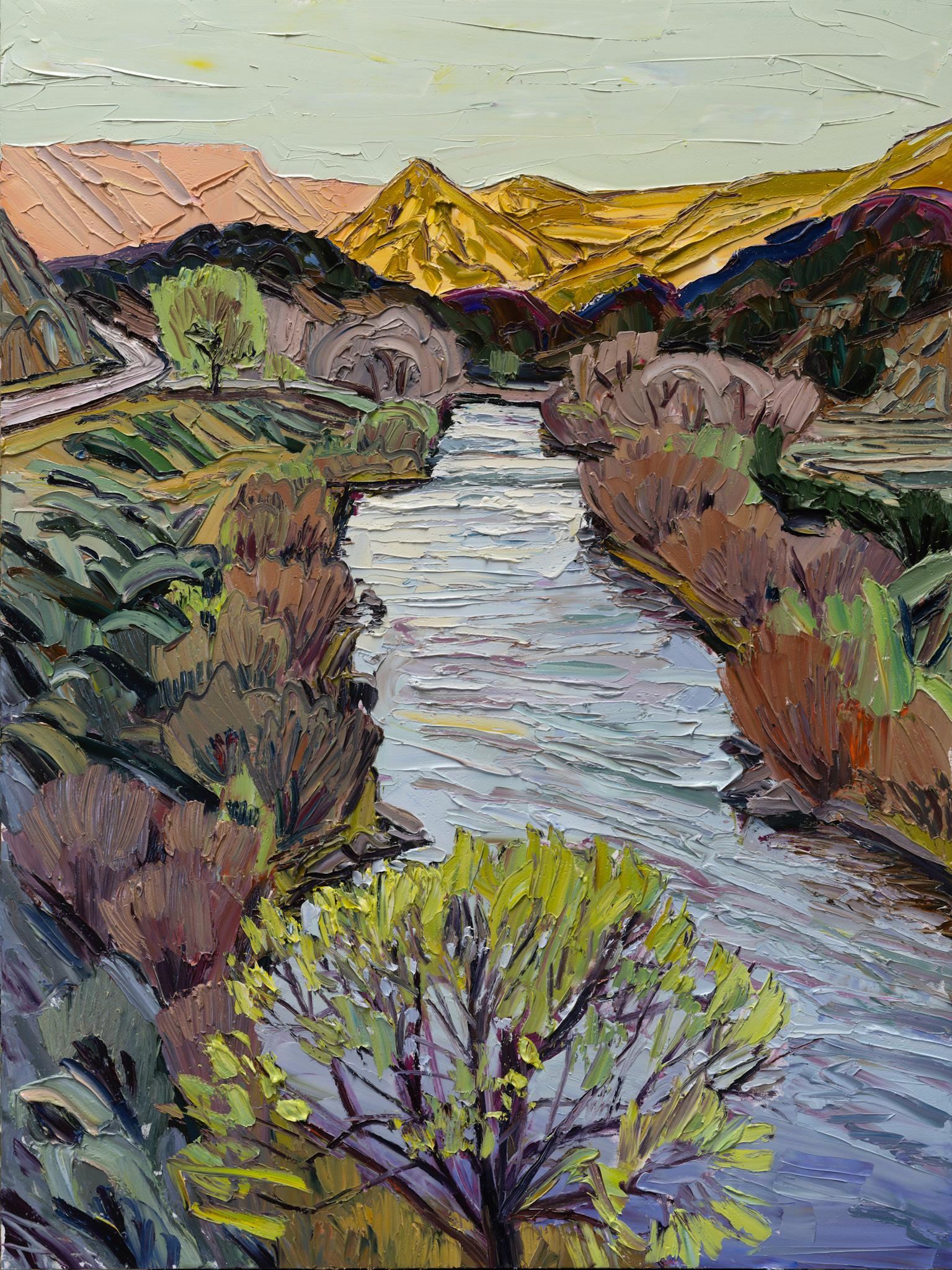
County Line - Eagle Eats Snake #3 2025, oil on panel, 40” x 30”
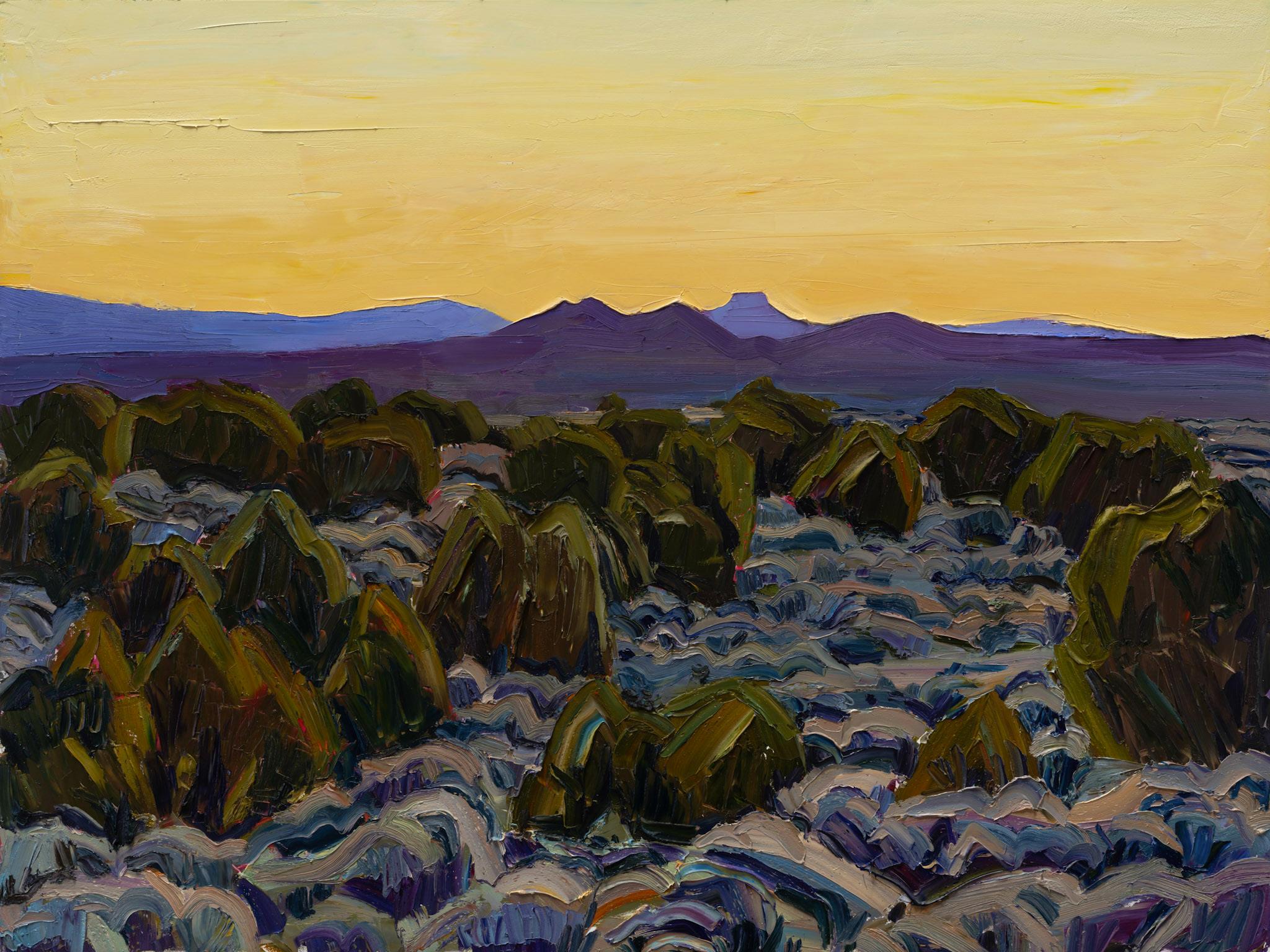
Rift Valley - Time (Dusk) 2024, oil on panel, 30” x 40”
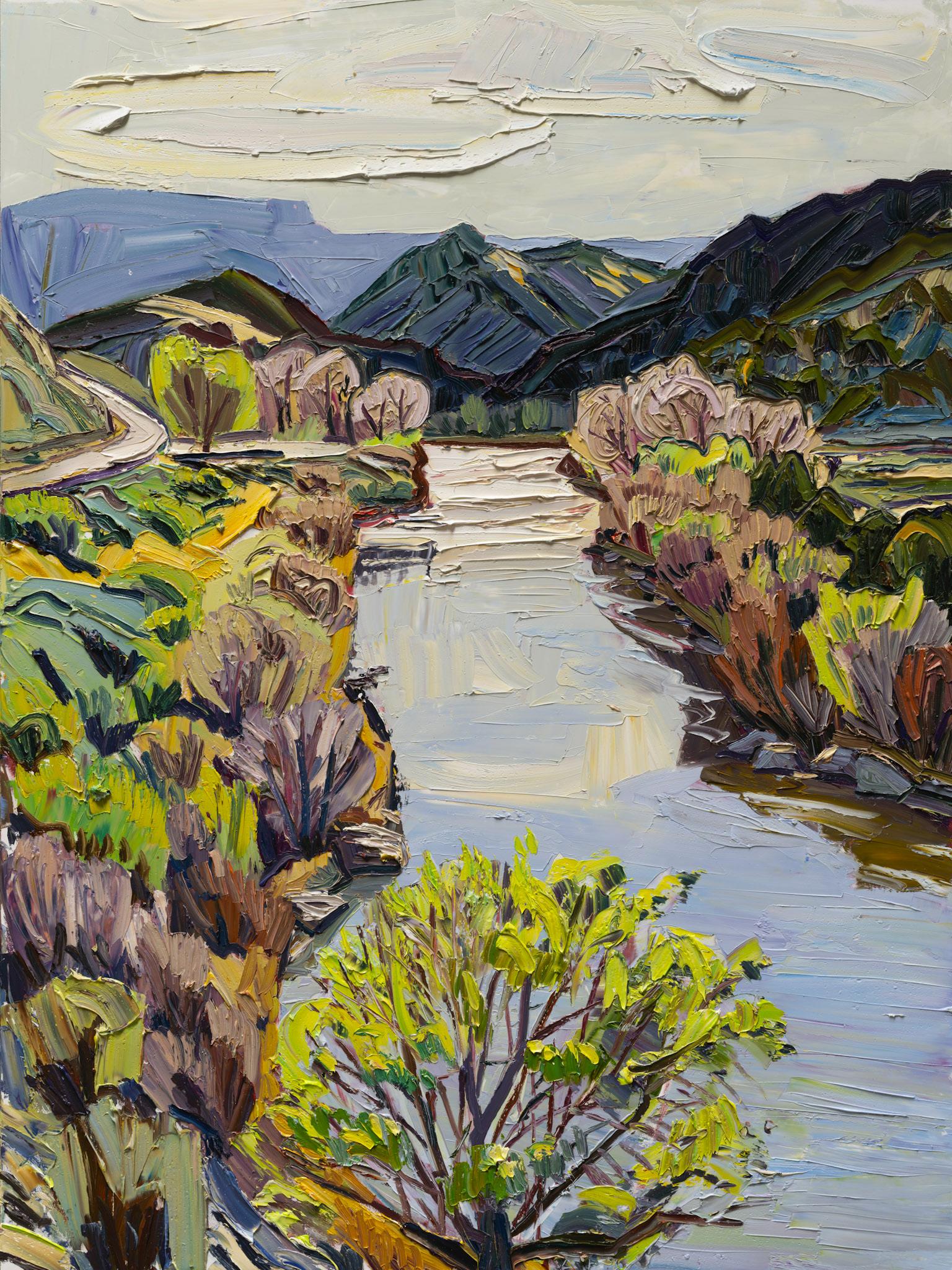
County Line - Eagle Eats Snake #2 2025, oil on panel, 40” x 30”
JIVAN LEE Biography
Known for his vibrant sense of color and his textural application of paint, Jivan Lee has a growing reputatuion as a leading figure of contemporary landscape painting. His powerful work incites a visceral involvement with the landscape, which is mirrored by his highly physical approach to the surface and an intense on-location painting process
Lee’s art is a visual testament to his close engagement with the landscape and his attunement to the diverse interrelated forces operating within it. By design, Lee’s plein air practice requires him to paint the land as it change before him — the sunrise as it illuminates the earth in the morning, or an afternoon storm as it gathers strength before unloading or dissipating. His art stresses the powerful, interlocking forces at play in the natural world, suggesting that his paintings are but snapshots within a dynamic and ceaseless metamorphosis
Jivan Lee grew up in Woodstock, NY, and studied painting and evironmental policy at Bard College. His paintings have been exhibited at museums and educational institutions across the country, and featured in reviews and articles in publications such as Western Art & Architecture, Fine Art Connoisseur, Southwest Art, The Albuquerque Journal, The Denver Post, American Art Collector, and Plein Air Magazine.
Jivan Lee |b. 1984 | Resides: Taos, NM
Education
Bard College, BA
Bard Center for Environmental Policy, MS
Selected Solo Exhibitions
2024 Arboreal, LewAllen Galleries, Santa Fe, NM
2023 Seasonality, Altamira Fine Art, Scottsdale, AZ
2023 Hondo, LewAllen Galleries, Santa Fe, NM
2023 Superbloom, Altamira Fine Art, Scottsdale, AZ
2022 The Infinite Landscape, The Lunder Research Center at the Couse-Sharp Historic Site, Taos, NM
2022 About Time, LewAllen Galleries, Santa Fe, NM
2021 Watershed, LewAllen Galleries, Santa Fe, NM
2020 Dynamics of Change, LewAllen Galleries, Santa Fe, NM
2020 Weathervane, Altamira Fine Art, Scottsdale, AZ
2019 Monument, William Havu Gallery, Denver, CO
2019 Constant / Change, LewAllen Galleries, Santa Fe, NM Icons of the American West, Altamira Fine Art, Jack son, WY
2018 LewAllen Galleries, Santa Fe, NM
2018 By the Wayside, Altamira Fine Art, Scottsdale, AZ
2017 A River Runs Through, LewAllen Galleries, Santa Fe, NM
2017 Our Land, Altamira Fine Art, Scottsdale, AZ
2016 LewAllen Galleries, Santa Fe, NM
2016 Atmosphere, Altamira Fine Art, Jackson, WY
2016 For the Wild, Heinley Fine Arts, Taos, NM
2015 Hallowed Ground, Harwood Art Center, Albuquerque, NM
2014 Sky Above | Earth Below, Heinley Fine Arts, Taos, NM
2013 Paint This Land, Heinley Fine Arts, Taos, NM
2013 Introducing Jivan Lee, William Havu Gallery, Denver, CO
2011 Milagro Gallery, Taos, NM
Selected Awards
2020 Finalist, Acclaimed Artist Series, New Mexico Art in Public Places Program
2018 Fine Art Connoisseur Award, Coors Western Art Exhibit and Sale
2017 Fine Art Connoisseur Award, Coors Western Art Exhibit
2016 “Three to Watch” artist, Fine Art Connoisseur Finalist, NM Art in Public Places Large-scale Purchase Initiative
2015 Cover Artwork - February 2015, landscape issue, South
-west Art magazine
2014 Solo exhibition award, 2015 Solo series, Harwood Art Center Winner, 3rd, 4th, & 5th 2014 Showcases, ArtSlant
2013 Best of Show, 15th Annual Masterworks of New Mexi co Exhibition, Albuquerque, NM
2012 Award of Excellence, ¡Encantada! 2012 exhibition, Albuquerque, NM
2011 Plein Air Salon national semi-finalist
Armadillo Santa Fe award, “Land and Light,” Millicent Rogers Museum
Selected Bibliography
2025 “America’s Art City.” Art & Object. John Dorfman. Summer 2025. 32.
2024 “Honoring the Scenic Awe of Nature’s Landscape in New Mexico.” Mountain Living. March 25, 2024.
2024 “Jivan Lee: Arboreal.” Fine Art Connoisseur. 2024
2022 “Museum Preview: Pieced Together.” Western Art Collector. December 2022. 108 - 111.
2022 “Jivan Lee’s Long-Form Painting Meditation.” Southwest Contemporary. Ashley M. Biggers. May 23, 2022.
2021 “Seasons of the Day.” Santa Fe New Mexican / Pasatiempo. Michael Abatemarco. August 6, 2021. 24 - 26 & cover.
2020 “I’m Feeling it in the Cells of my Body.” Albuquerque Journal. Kathaleen Roberts. 8/30/2020. A&E pg. 7, 8.
2020 “Exploring Large-scale Paintings: An Interview with Art ist, Jivan Lee.” Savvy Painter Podcast. Antrese Wood. 7/31/20.
2020 “An Art Fair Where You Can Buy a Steer and a Painting in the Same Venue.” Hyperallergic. Kealey Boyd. 1/23/2020.
2019 “Monumental.” American Art Collector. John O’Hern. December 2019. 64 - 69.
2019 “Coors Western Art Exhibit & Sale: a million-dollar, career-making event.” Denver Post. John Wenzel. 1/19/2019.
2018 “Plein Air Painting Today.” Vasari 21 (online). Ann Landi. 10/21/2018.
2018 “No Doors.” Western Art & Architecture. Gussie Fauntleroy. June/July 2018. 136 - 141.
2018 “Santa Fe: A visit to the Railyard Arts District.” Two Coats of Paint. 6/22/2018.
2018 “A Home that Embraces the Grey.” Colorado Homes and Lifestyles Magazine. April 2018. 89.
2017 “Review: Enjoy the Scenery at William Havu’s ‘Survey’.” Westword. Michael Paglia. October 25, 2017.
2017 “State of the Art Market.” Southwest Art. October 2017. 74-79.
